Since I found myself in the Medina of Fes, more precisely in the part of the city called Fes el-Bali, on a Friday, and early in the afternoon at that, I had to face closed institutions and shops. Not only is Friday a holy day in the Muslim world, but it was also lunchtime.
Following local customs related to the lunch break, I headed to a very good hotel which, of course, had a restaurant. First, I passed through some picturesque parts of Fes el-Bali.
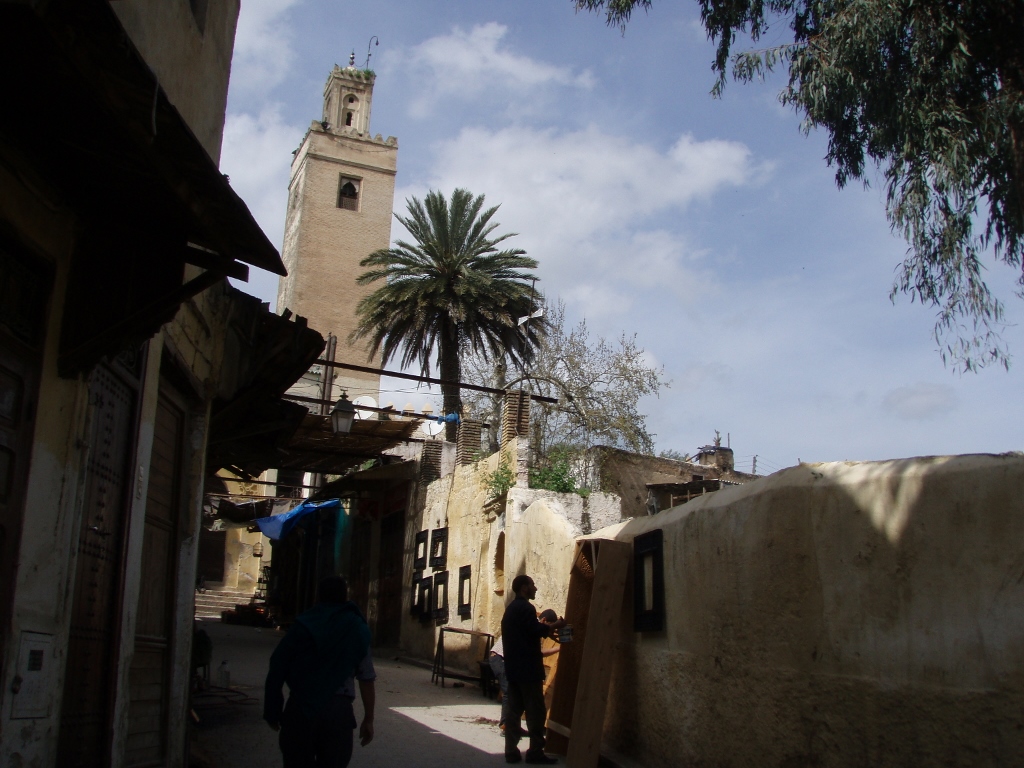 Fes, a detail
Fes, a detail
When I wrote this travelogue in 2025, I truly couldn’t remember how I even chose this hotel or how I found it. But luckily, I had taken photos and recorded with a video camera, which helped me refresh my memory of some details.
Let me first address the approach to the hotel, which I actually took a photo of at the end of my break. When I first arrived here, I was hungry, so I had to hurry a bit and didn’t take any pictures at the time. It was also important for me to rest a little because I had gotten hot during the walk. It was the end of March and temperatures in Morocco were rising, while my body and I usually expect such heat only in June.
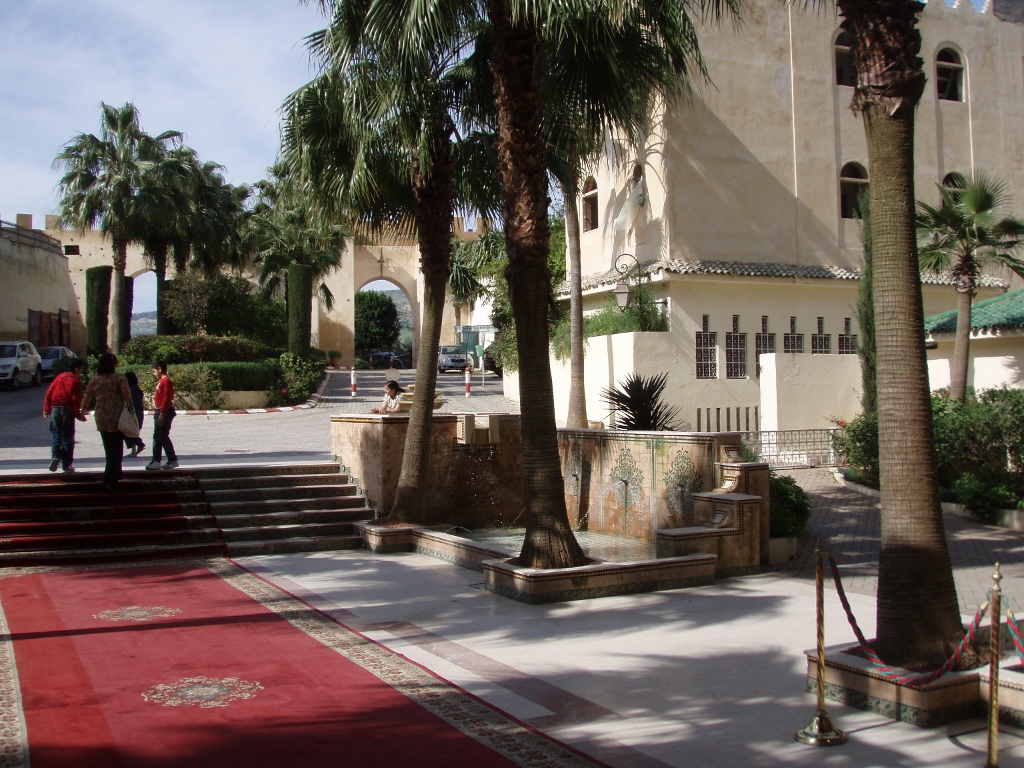 Hotel in Fes where I went for lunch, a detail
Hotel in Fes where I went for lunch, a detail
Be that as it may, I soon sat down in a buffet-style restaurant, so I was able to choose my food freely. When I saw the amount of food I had eaten while writing these stories, I wondered how I managed it. But in fact, everything was both very tasty and light.
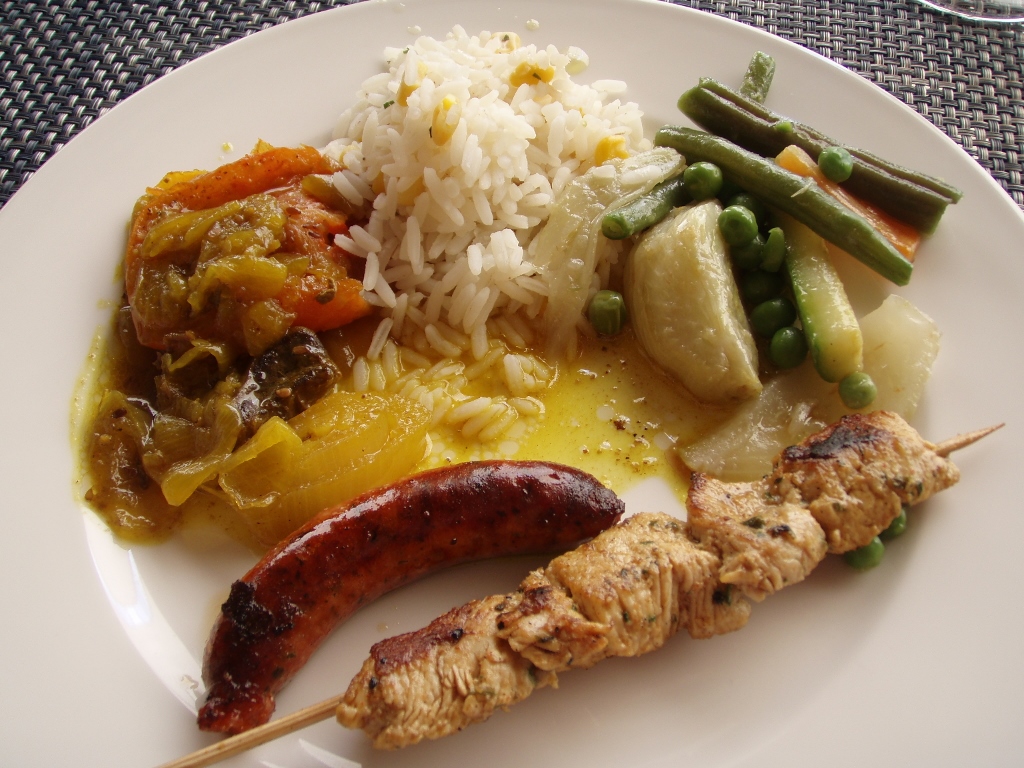 Part of the lunch in Fes
Part of the lunch in Fes
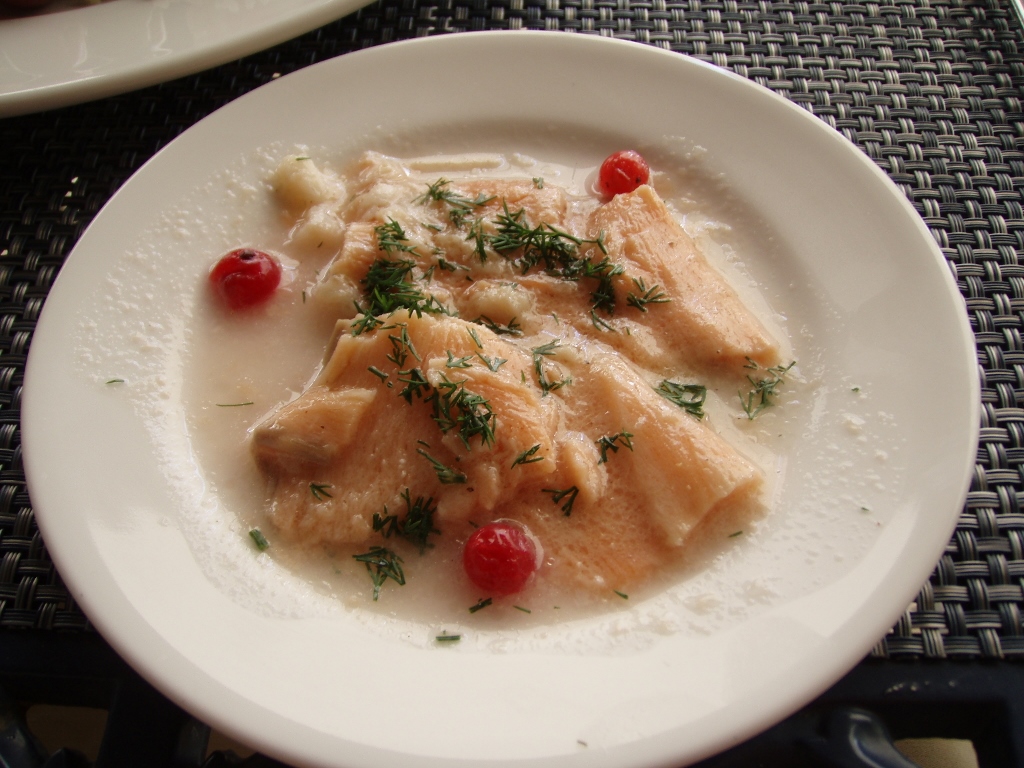 Part of the lunch in Fes
Part of the lunch in Fes
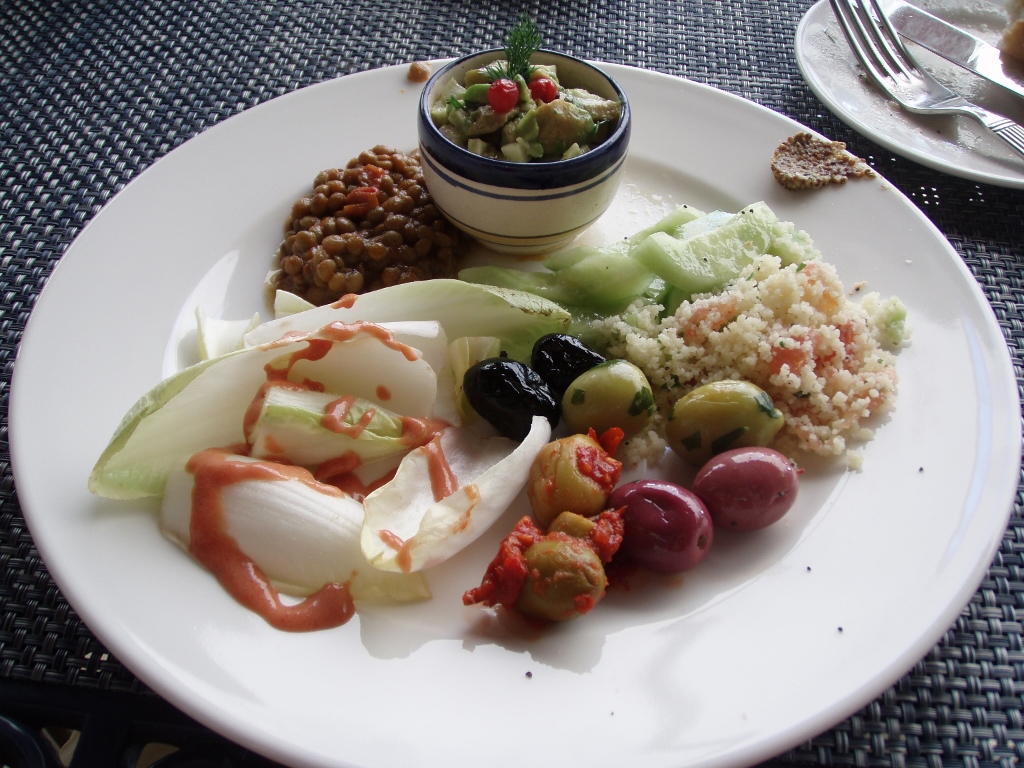 Part of the lunch in Fes
Part of the lunch in Fes
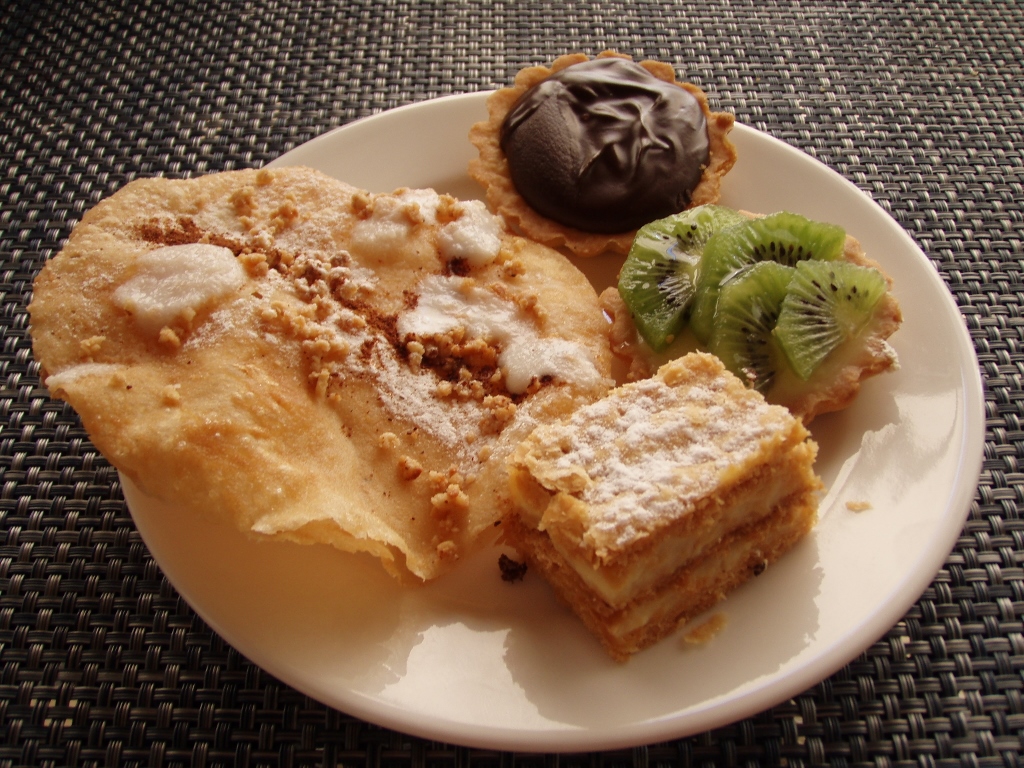 Part of the lunch in Fes
Part of the lunch in Fes
After satisfying my hunger, I even remembered to take a photo of the restaurant where I had the lunch.
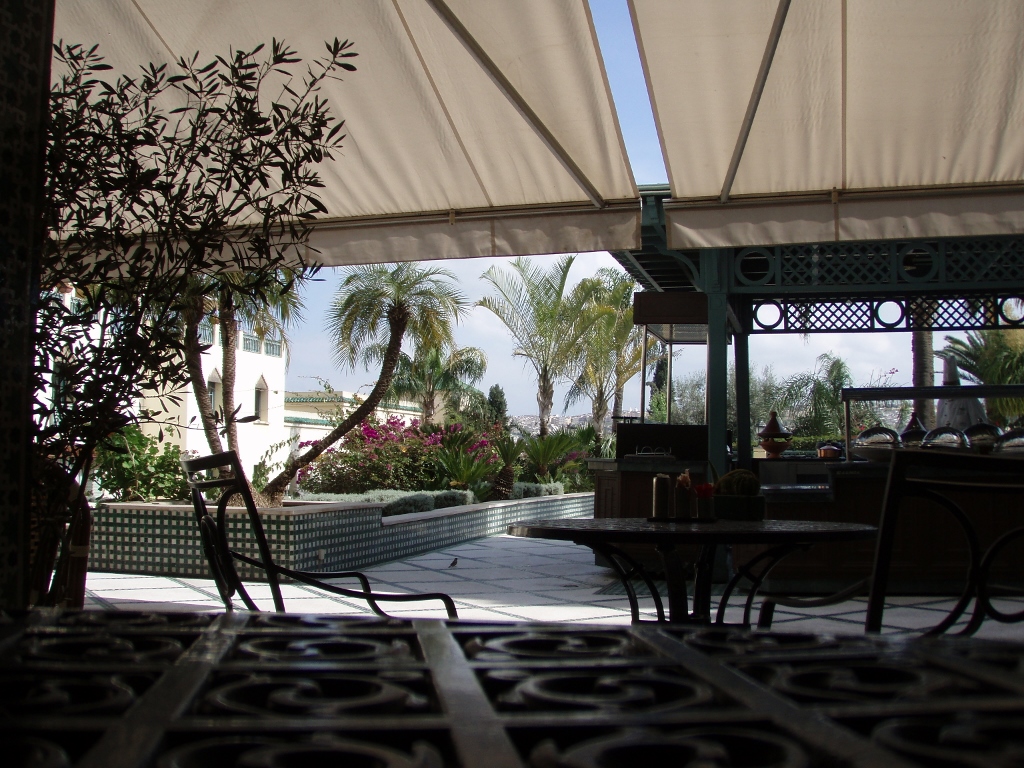 Hotel in Fes where I went for lunch, a detail
Hotel in Fes where I went for lunch, a detail
And then I walked around the hotel a bit more, climbing up to a terrace from where I had an outstanding view of the Medina in Fes and the surrounding area in general.
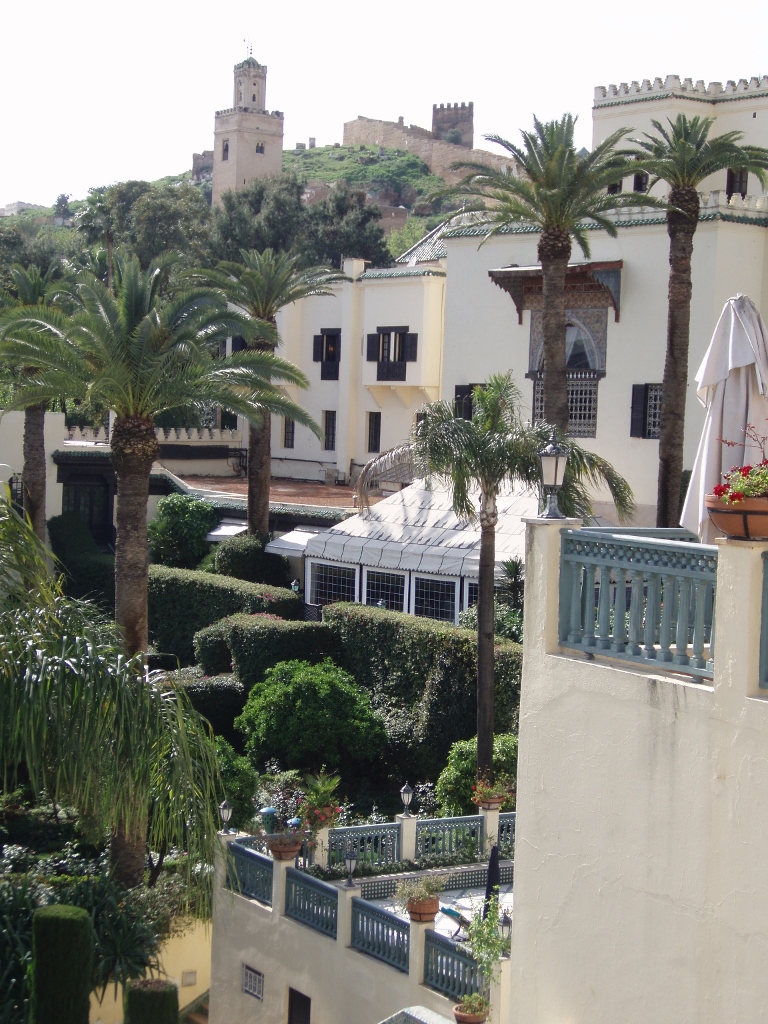 Hotel in Fes where I went for lunch, a detail
Hotel in Fes where I went for lunch, a detail
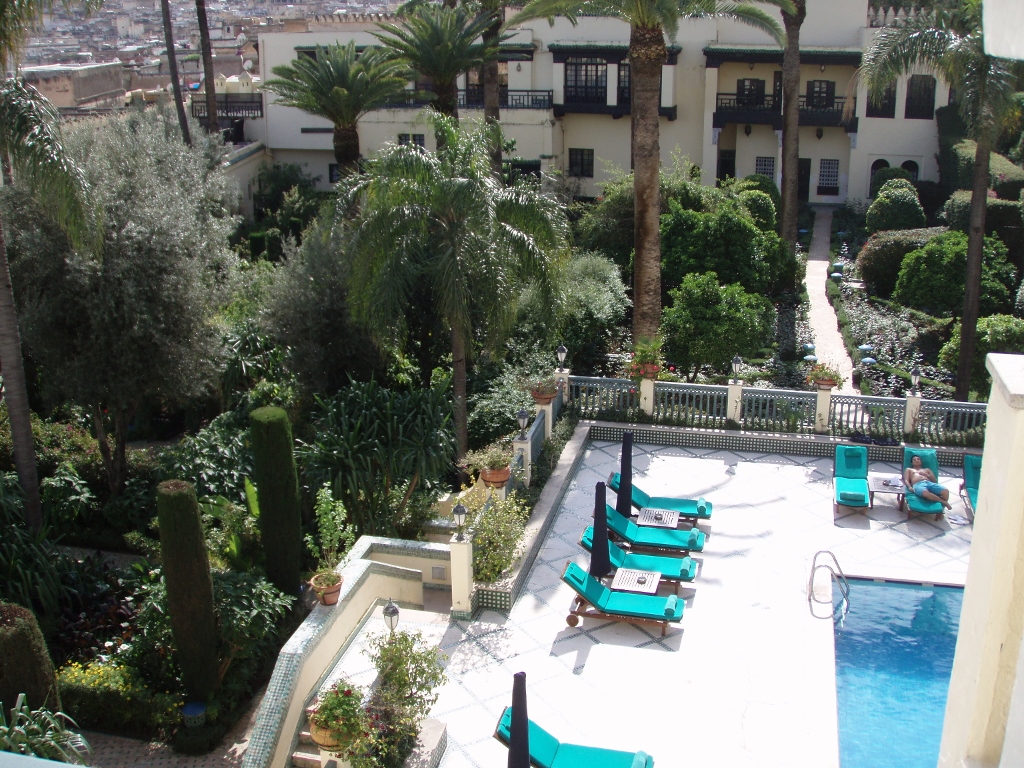 Hotel in Fes where I went for lunch, a detail
Hotel in Fes where I went for lunch, a detail
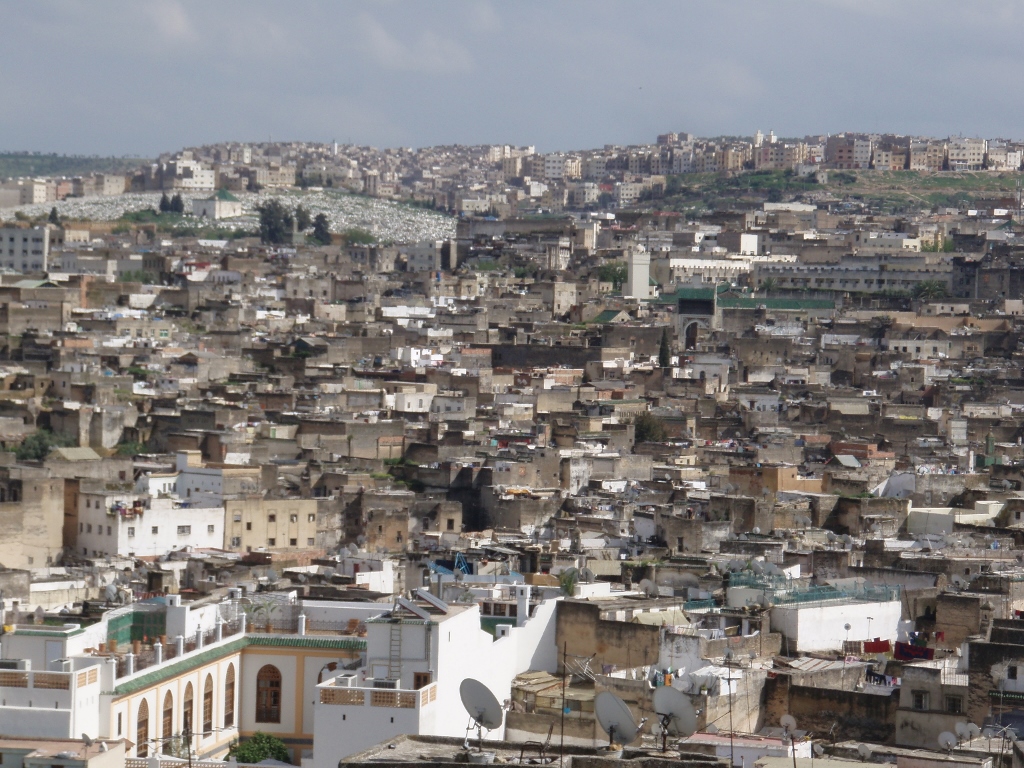 Fes
Fes
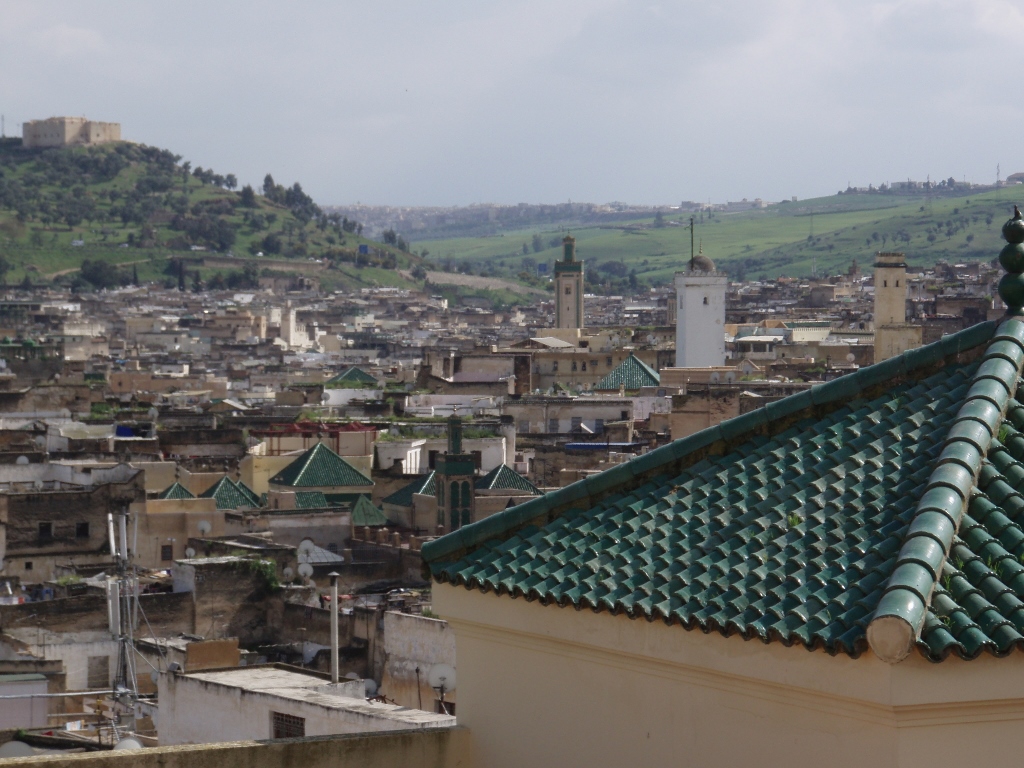 Fes, a detail
Fes, a detail
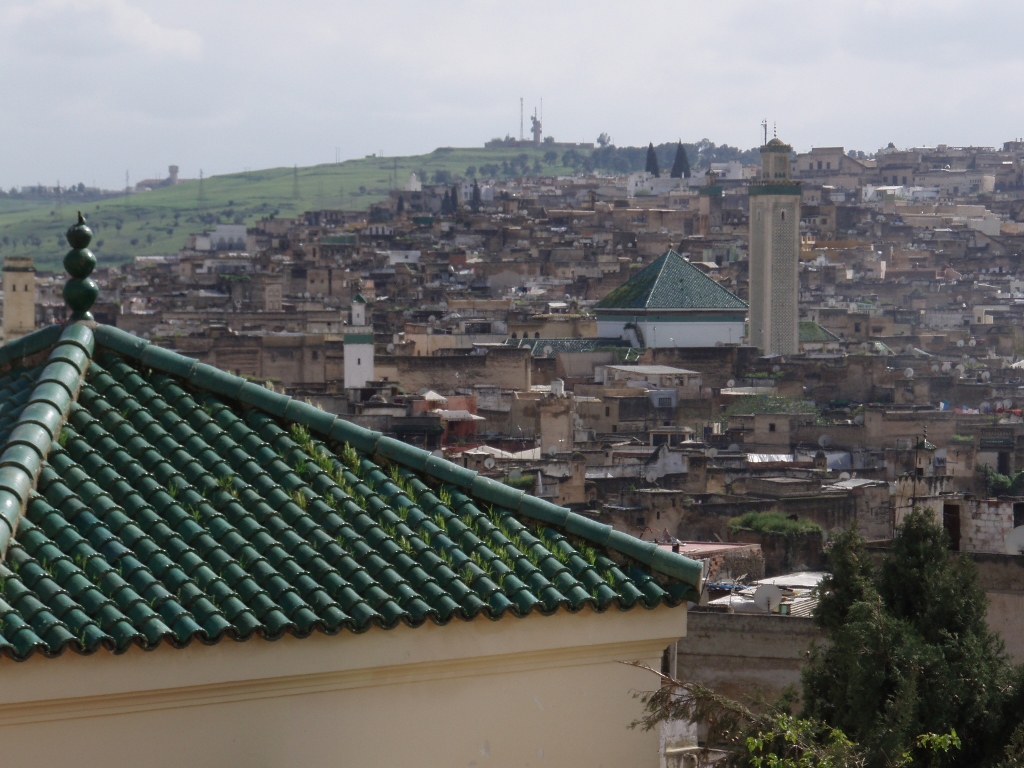 Fes, a detail
Fes, a detail
After this wonderful and hearty lunch, I continued walking through the Medina in Fes. I was now completely relaxed and almost didn’t even need to check my guidebook or the rather simplified map I had inside it – I was moving effortlessly in the direction that suited me. Along the way, I intensely enjoyed the details that caught my eye.
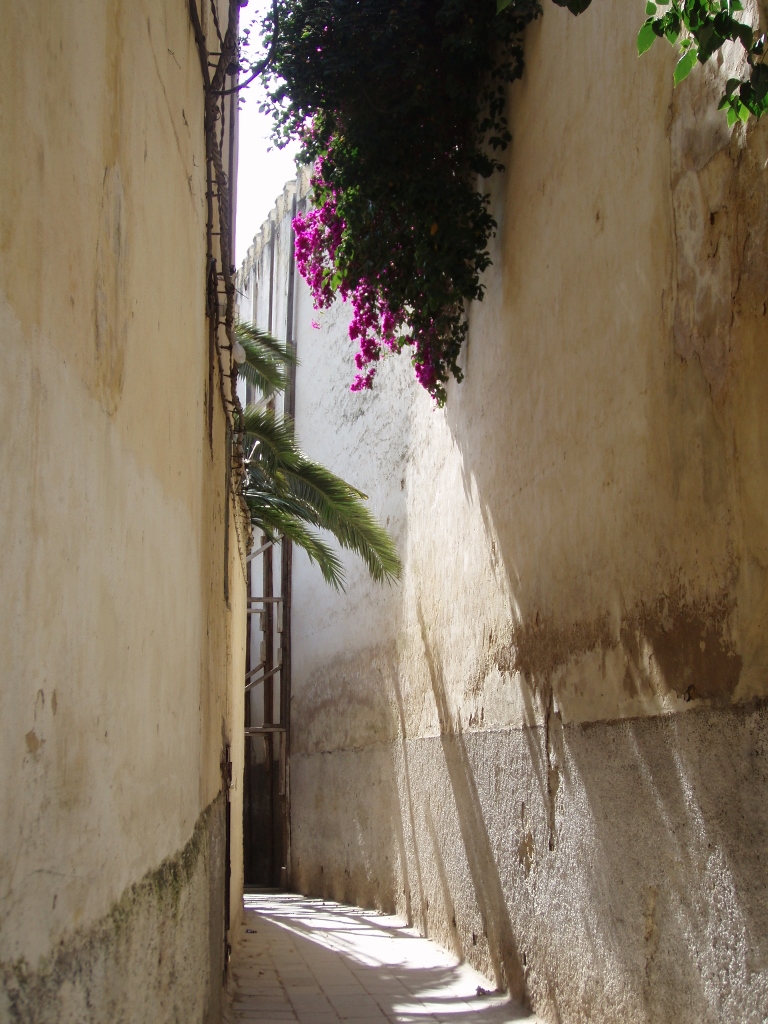 Fes, a detail
Fes, a detail
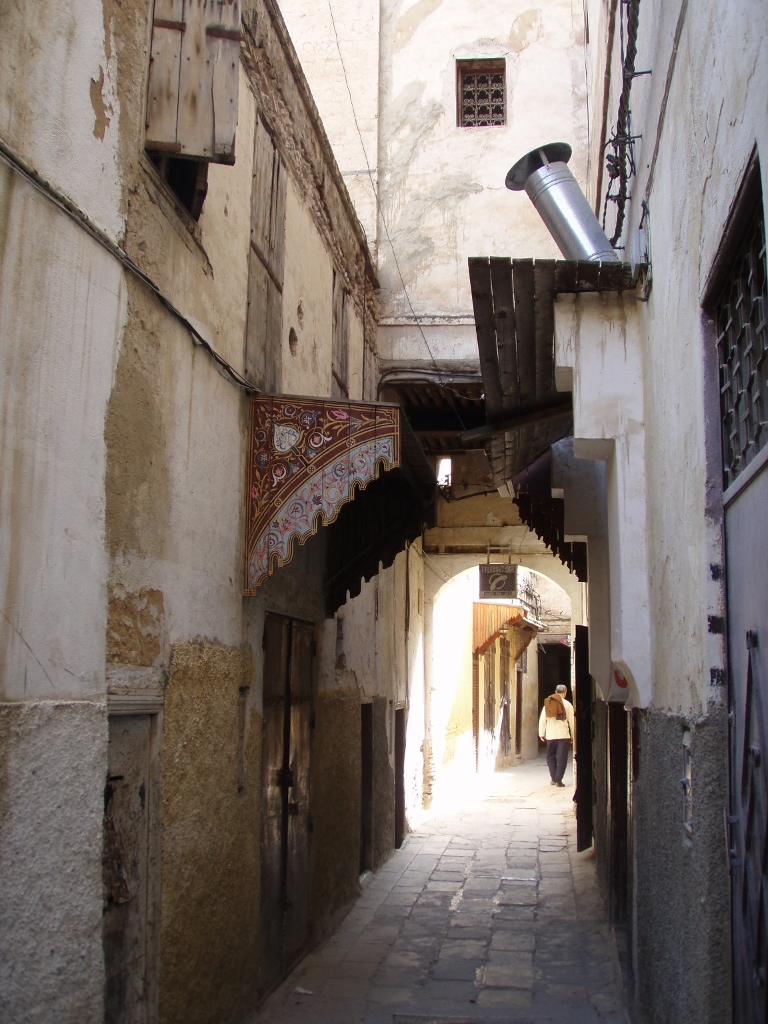 Fes, a detail
Fes, a detail
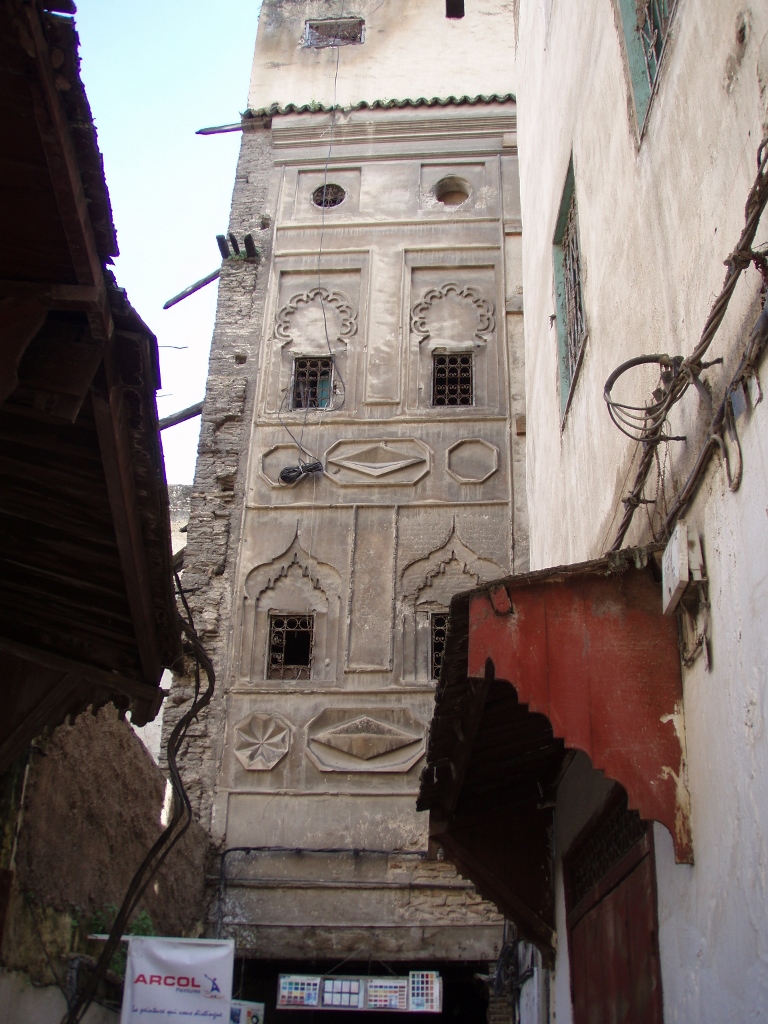 Fes, a detail
Fes, a detail
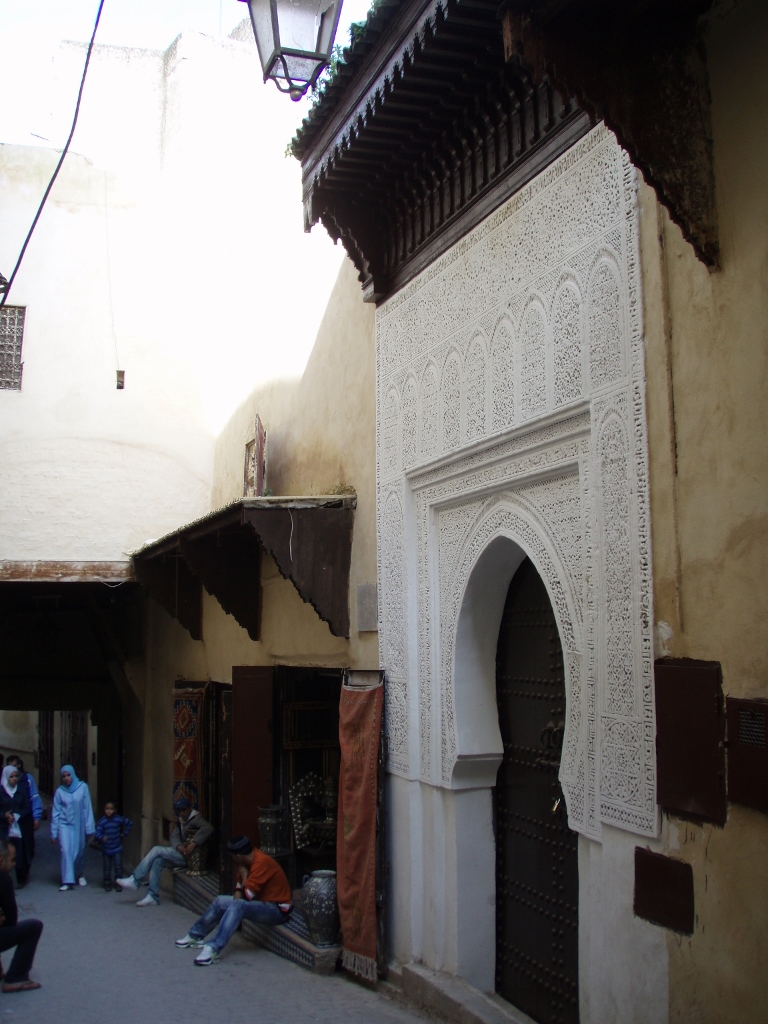 Fes, a detail
Fes, a detail
Along the way, I even wandered into some side streets and I must admit that I thoroughly enjoyed all of it. Here's a short video clip that illustrates what some parts of Fes el-Bali looked like in 2010, although I wouldn’t be surprised if things still look the same today.
Then I went to the Dar Batha Museum of Islamic Arts, which is considered one of the best in Morocco and certainly should not be missed.
The museum is housed in a former royal palace built in the late 19th century.
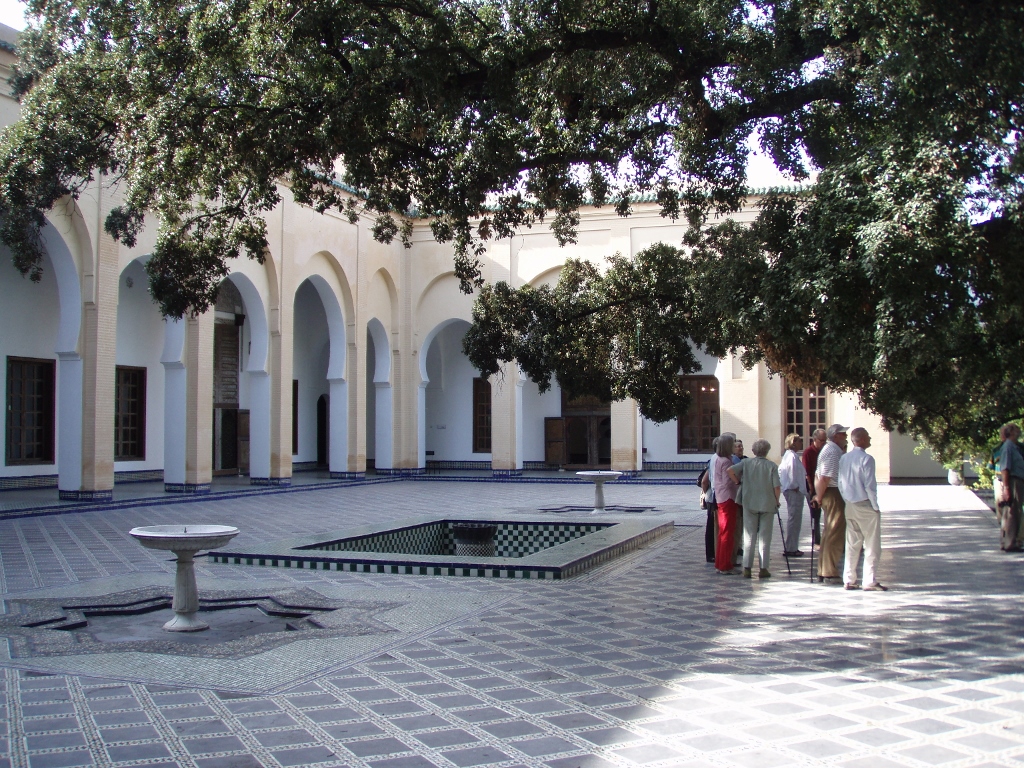 Dar Batha Museum of Islamic Arts, a detail
Dar Batha Museum of Islamic Arts, a detail
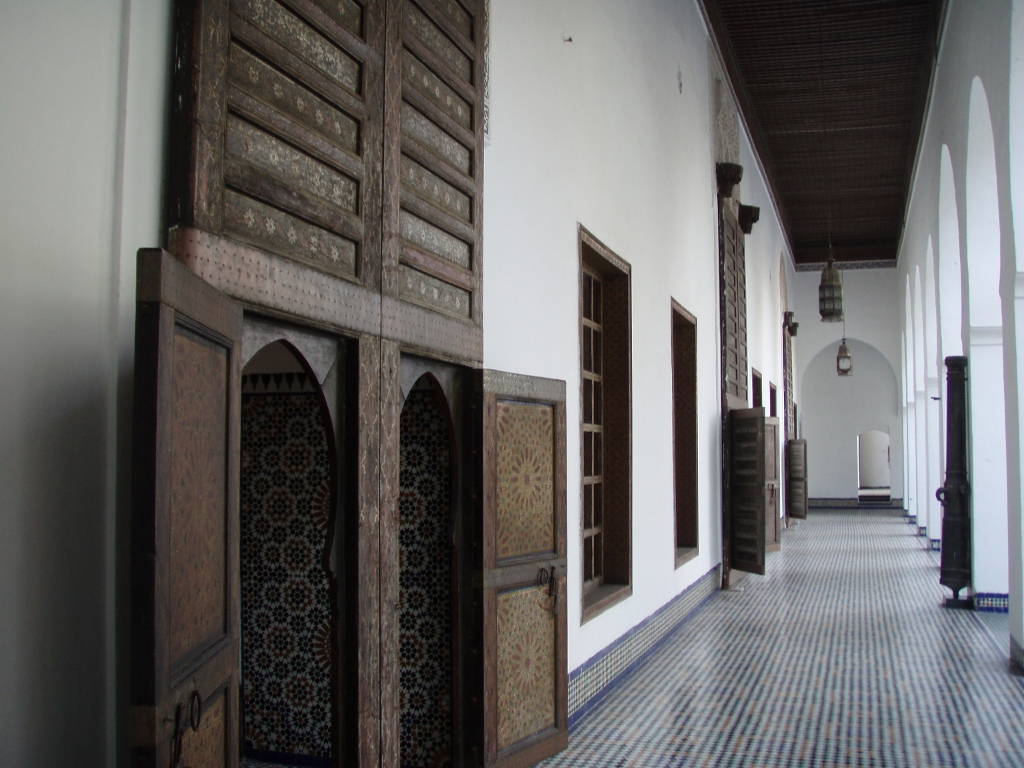 Dar Batha Museum of Islamic Arts, a detail
Dar Batha Museum of Islamic Arts, a detail
The museum, founded in 1915, houses a collection of around 6,500 historical and artistic objects, but photography inside was not allowed here either, so I only took pictures of the exterior.
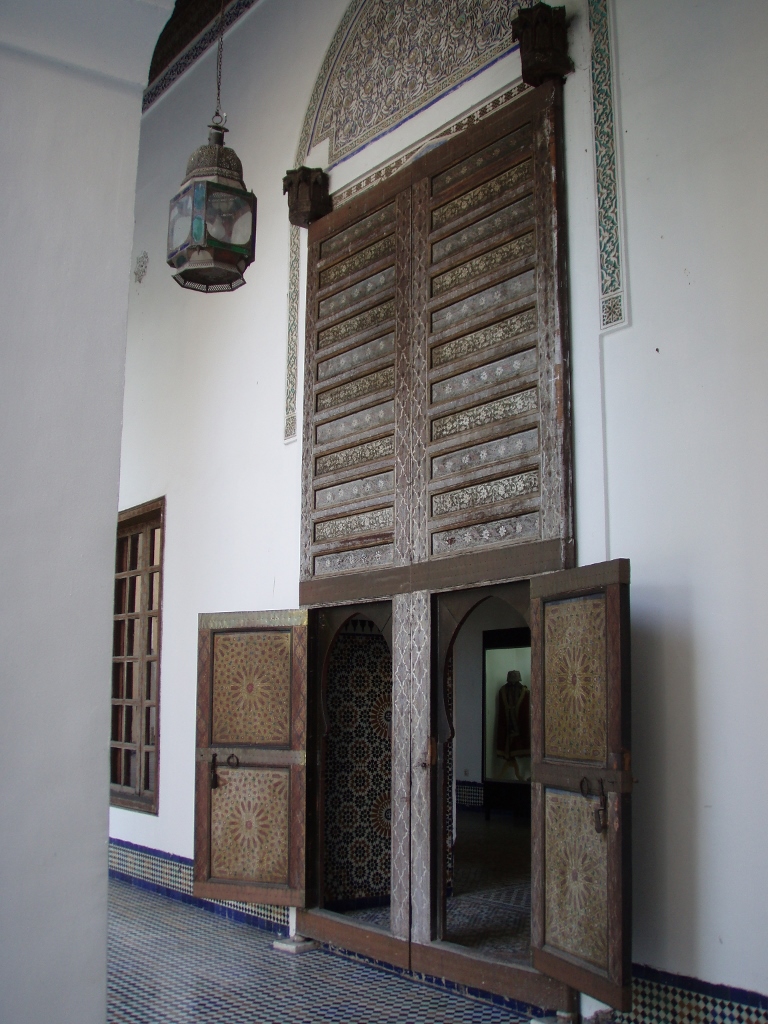 Dar Batha Museum of Islamic Arts, a detail
Dar Batha Museum of Islamic Arts, a detail
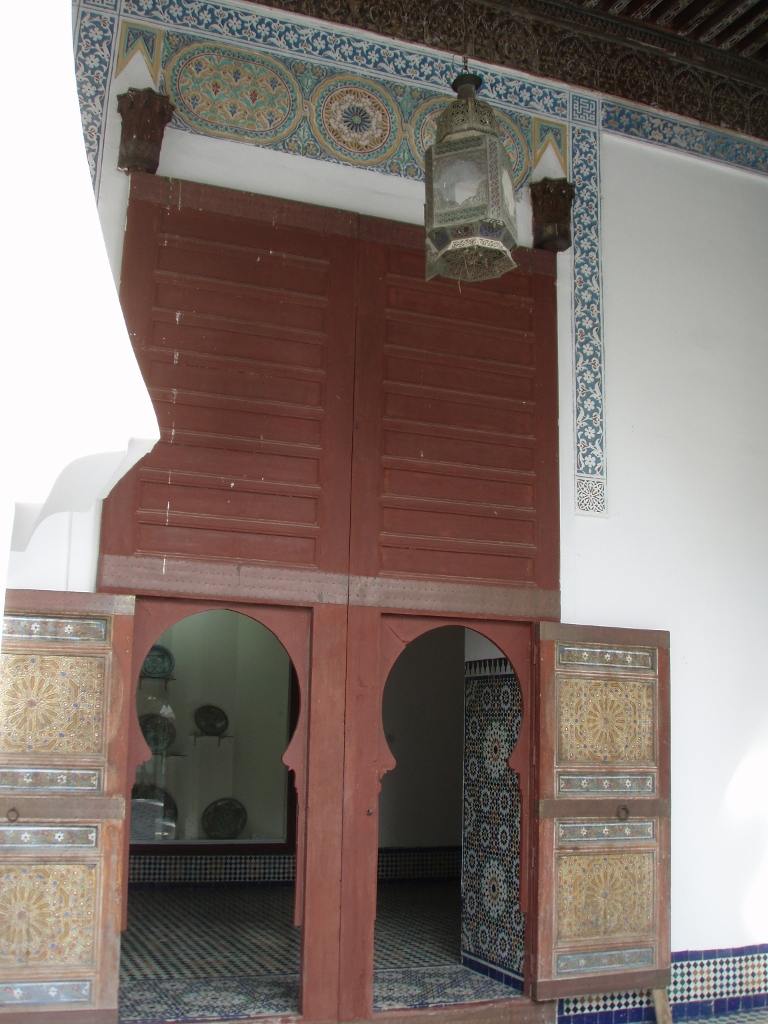 Dar Batha Museum of Islamic Arts, a detail
Dar Batha Museum of Islamic Arts, a detail
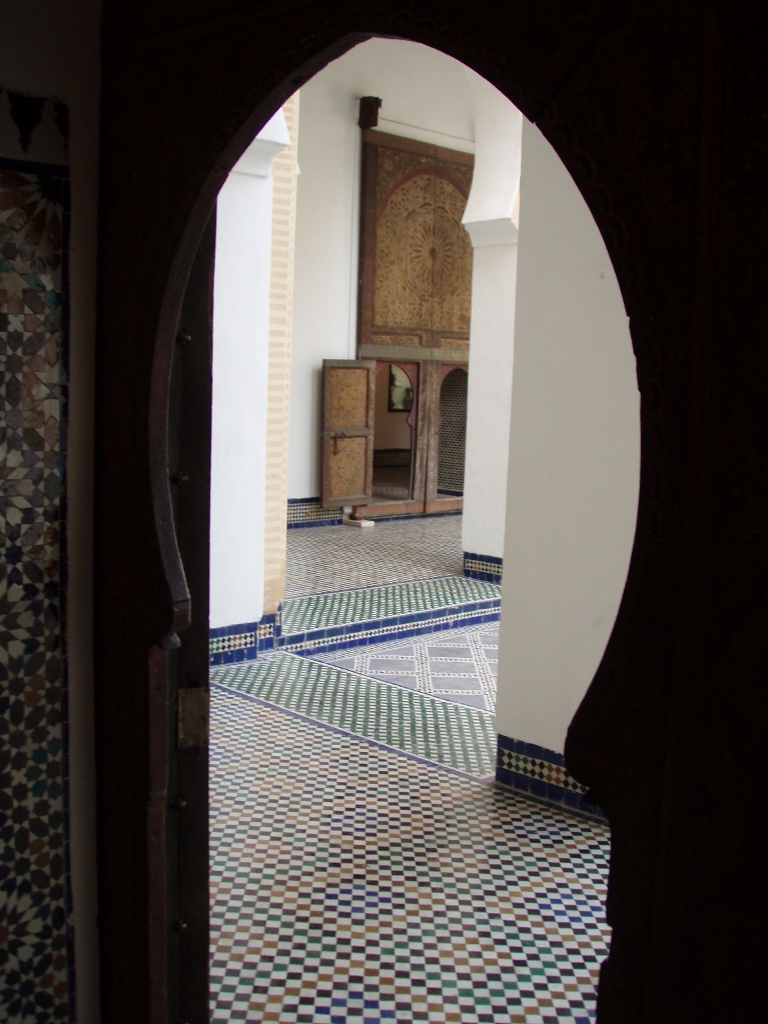 Dar Batha Museum of Islamic Arts, a detail
Dar Batha Museum of Islamic Arts, a detail
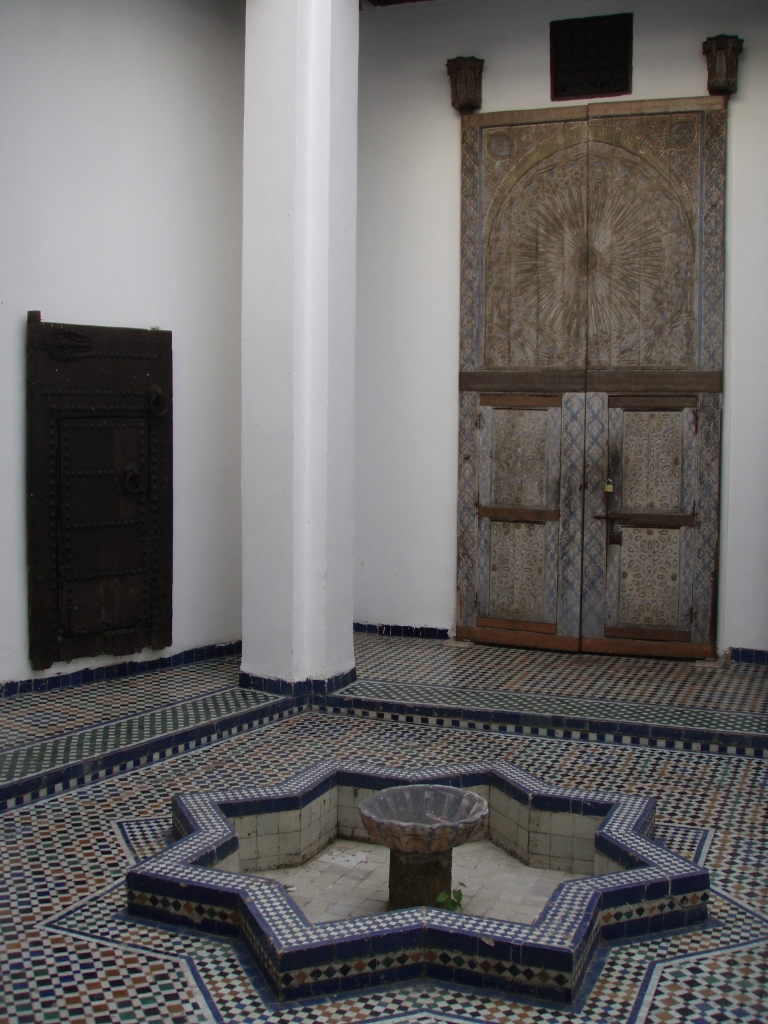 Dar Batha Museum of Islamic Arts, a detail
Dar Batha Museum of Islamic Arts, a detail
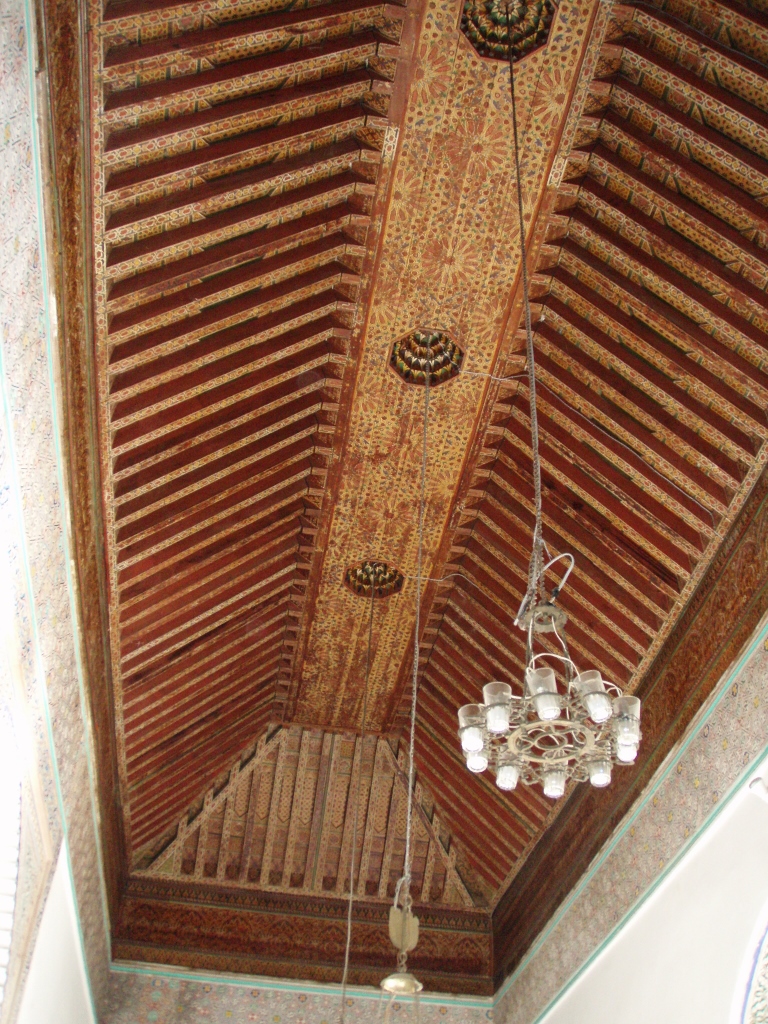 Dar Batha Museum of Islamic Arts, a detail
Dar Batha Museum of Islamic Arts, a detail
Within the museum, there is also a beautiful garden designed in the Andalusian style, but it was created only in the early 20th century when the palace was converted into a museum.
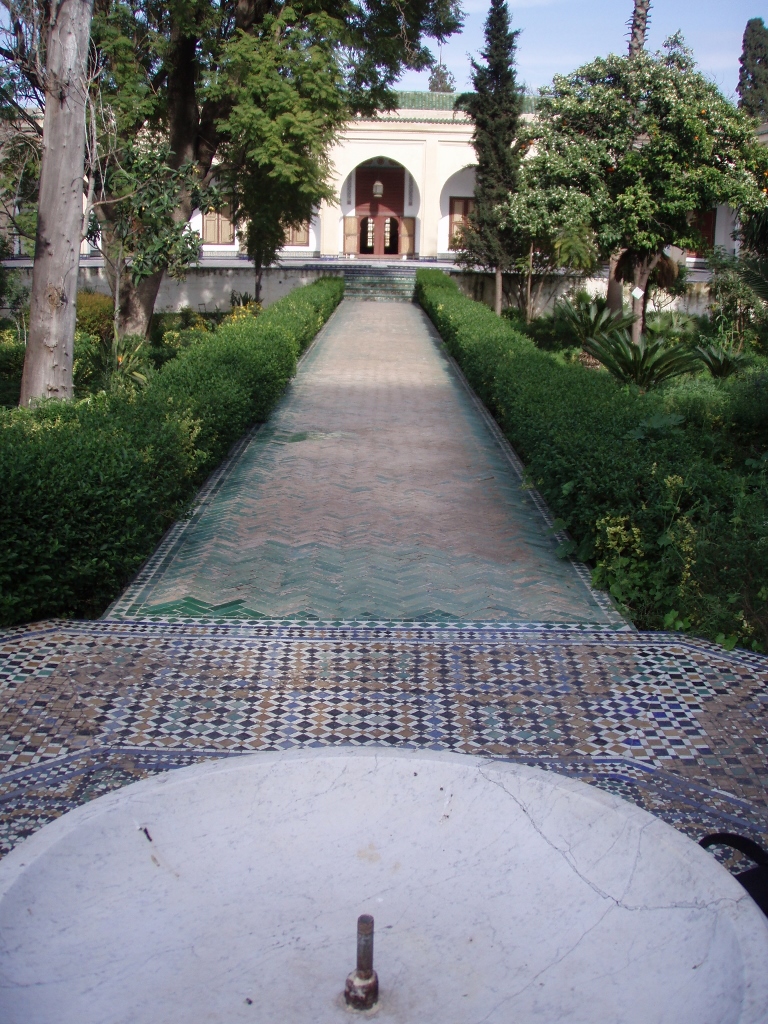 Dar Batha Museum of Islamic Arts, a detail
Dar Batha Museum of Islamic Arts, a detail
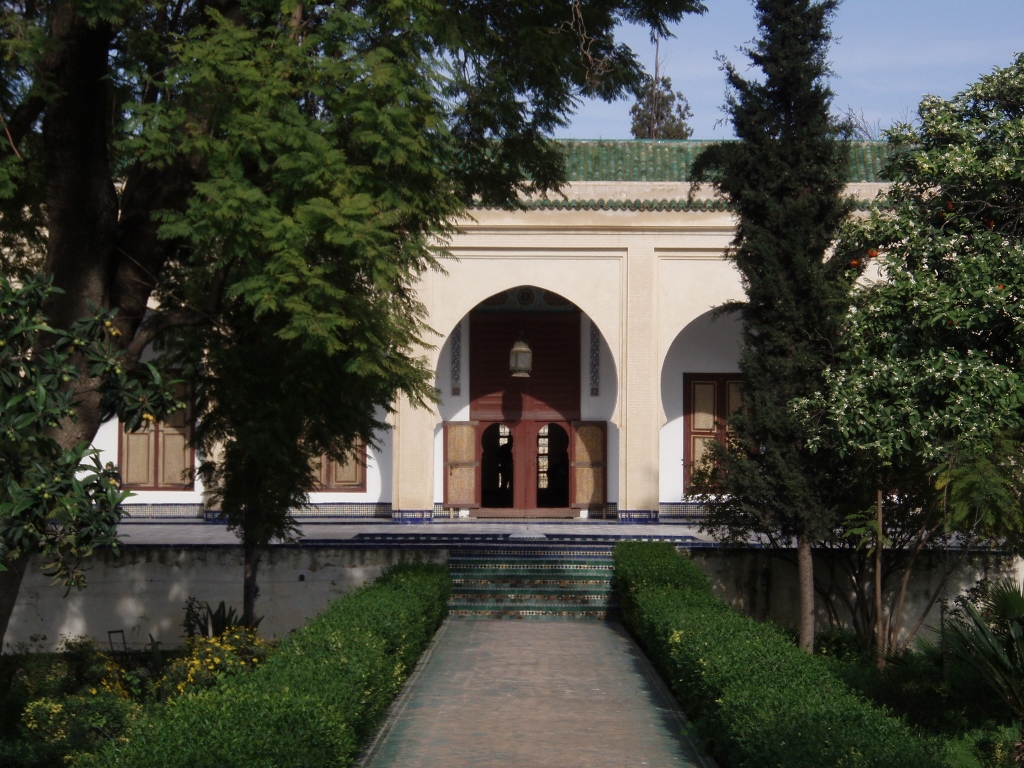 Dar Batha Museum of Islamic Arts, a detail
Dar Batha Museum of Islamic Arts, a detail
After visiting the museum, I started heading back towards the Bab Bou Jeloud gate, through which I had entered the eastern part of the Medina, that is, Fes el-Bali. It was still exceptionally beautiful, but now illuminated in a slightly different way.
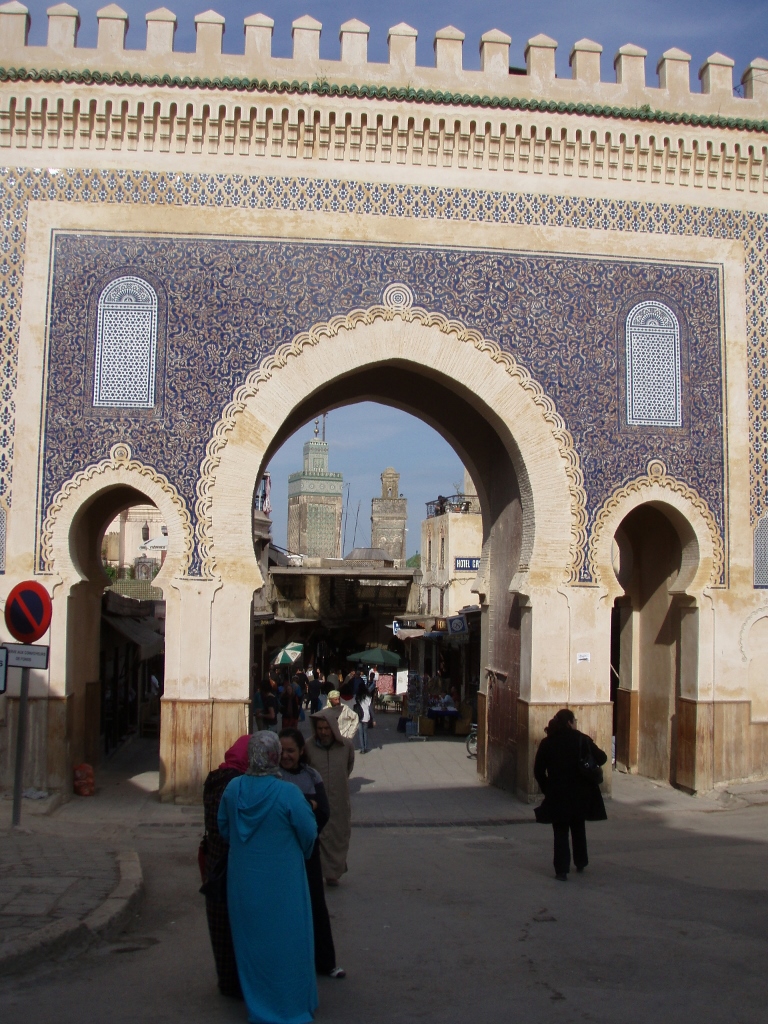 Fes, a detail
Fes, a detail
Soon I exited Fes el-Bali through the Bab Mahrouk gate, the same one I had entered through, and then I headed towards the western part of the Medina known as Fes Jdid, which means “New Fez.” Fes Jdid should not be confused with Ville Nouvelle, the modern part of the city located south of the Medina.
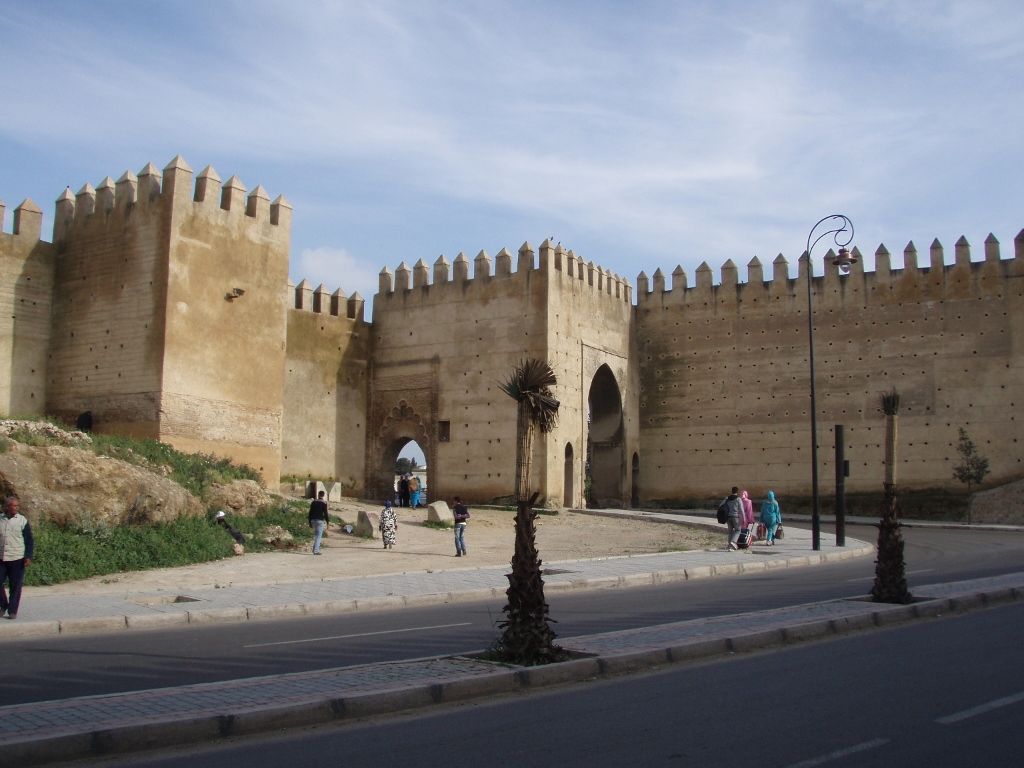 Fes, a detail
Fes, a detail
First, I reached the Bab Chems gate, and through it I arrived at the park that today is most commonly referred to as Jnan Sbil, while at the time of my visit in 2010, my guidebook mentioned it under the name Bou Jeloud.
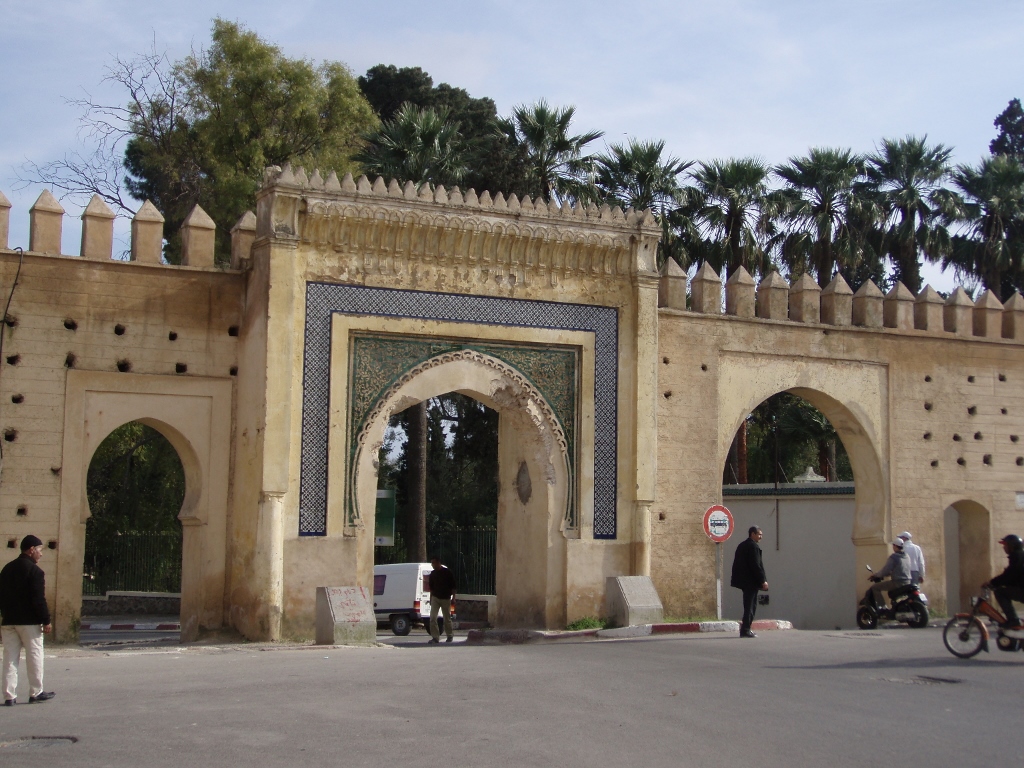 Fes, a detail
Fes, a detail
There is one more important detail about the park. At the time of my visit, it was undergoing reconstruction, so entry was not allowed, but I managed to take a photo through the metal fence.
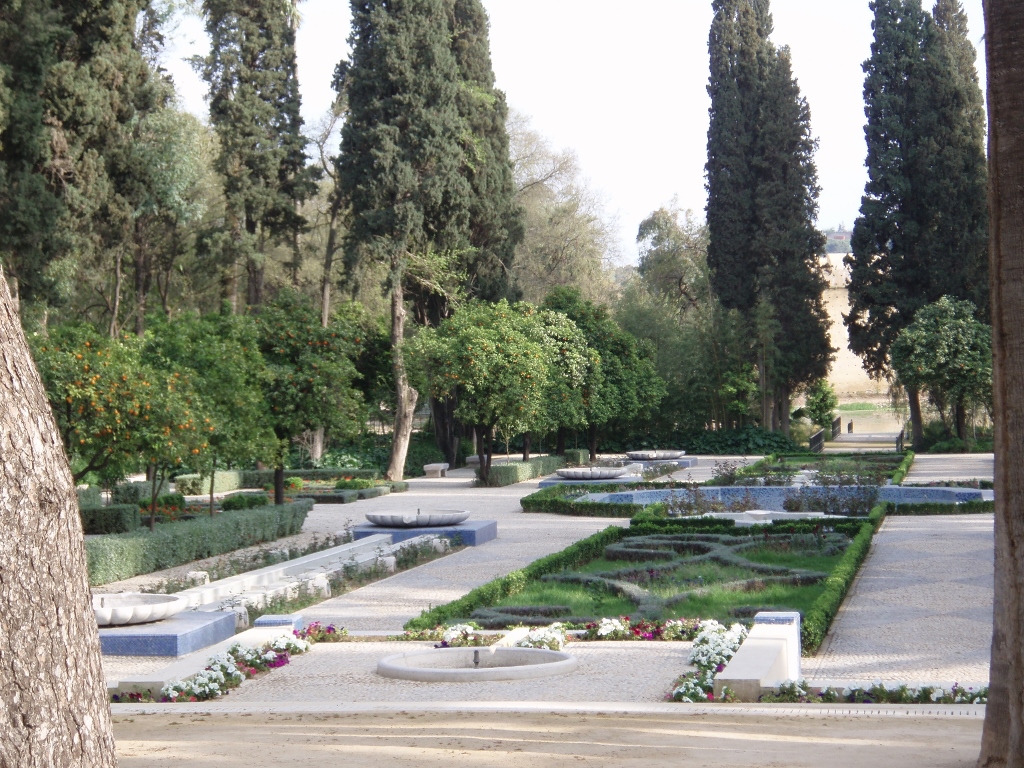 Fes, a detail
Fes, a detail
I continued down the street next to the park and along the way, I saw parts of the walls that surround the Medina in Fes.
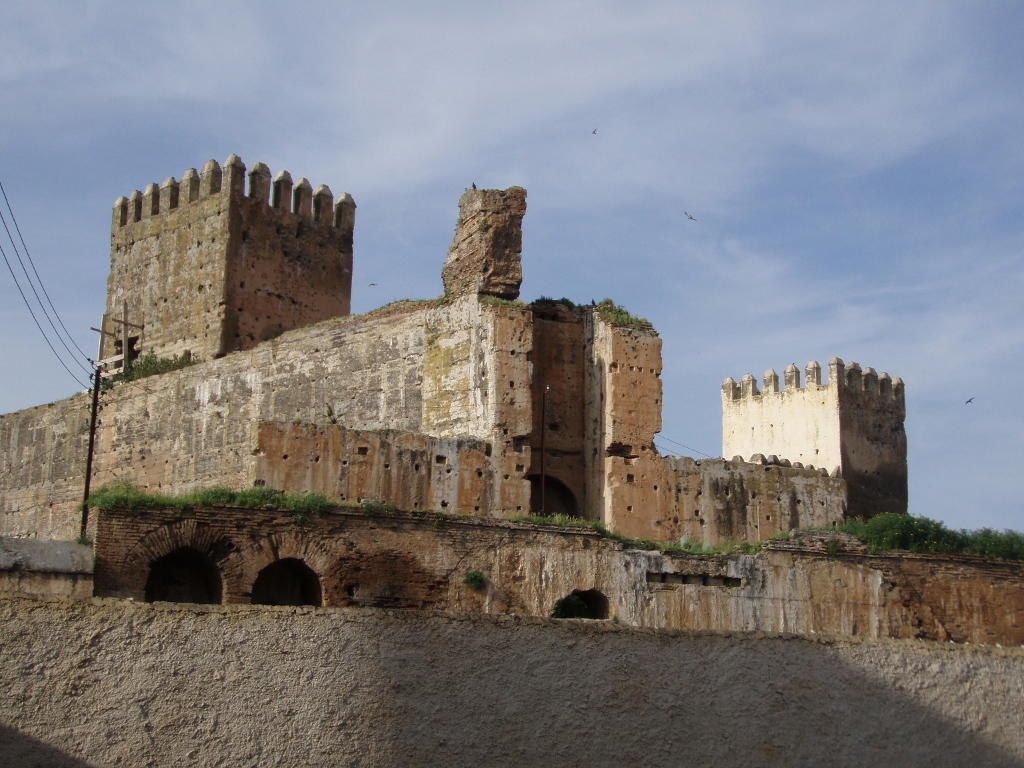 Fes, a detail
Fes, a detail
That’s how I reached a less significant yet still impressive gate through which I entered Fes Jdid.
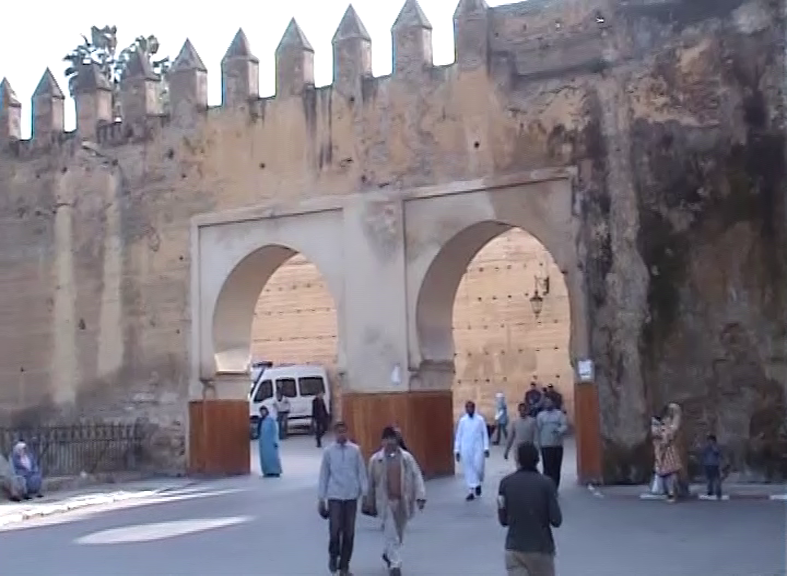 Fes, a detail
Fes, a detail
Fes Jdid, as the newer part of the city (compared to Fes el-Bali), was founded in 1276, and the Royal Palace still stands there today, along with a vast garden, or rather, a private park.
Needless to say I didn’t go there, but now I started to venture into the streets of Fes Jdid that were very lively. It seemed to me that there were far fewer foreigners and many more locals who had come out to shop, as the afternoon prayer had just finished.
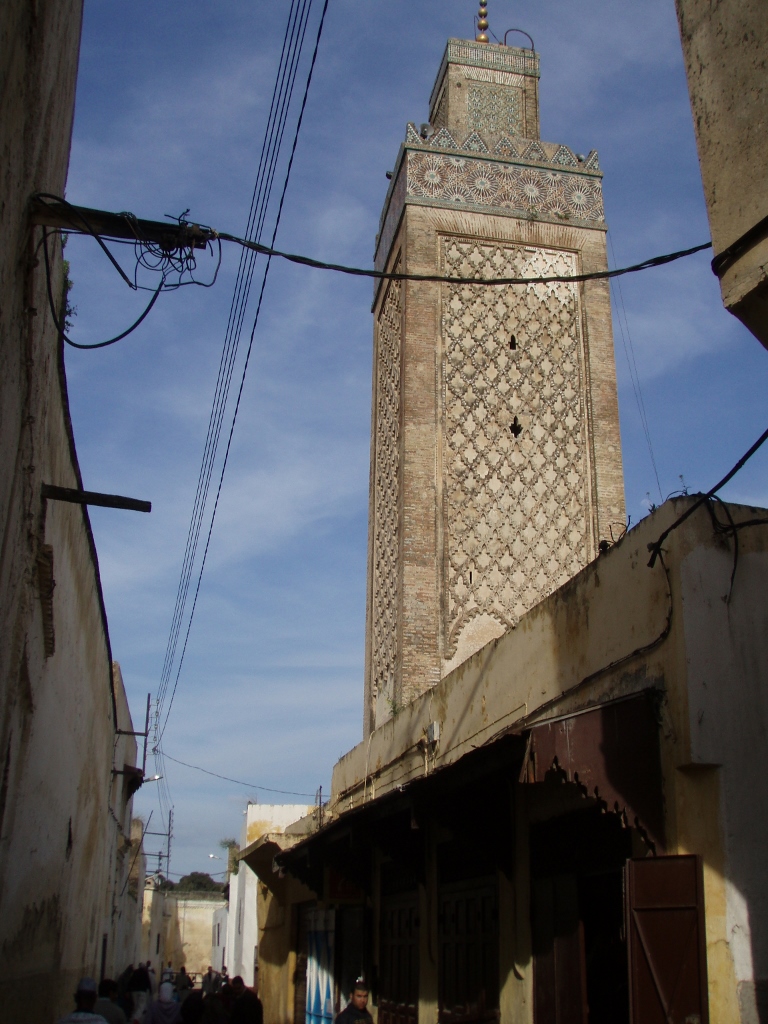 Fes, a detail
Fes, a detail
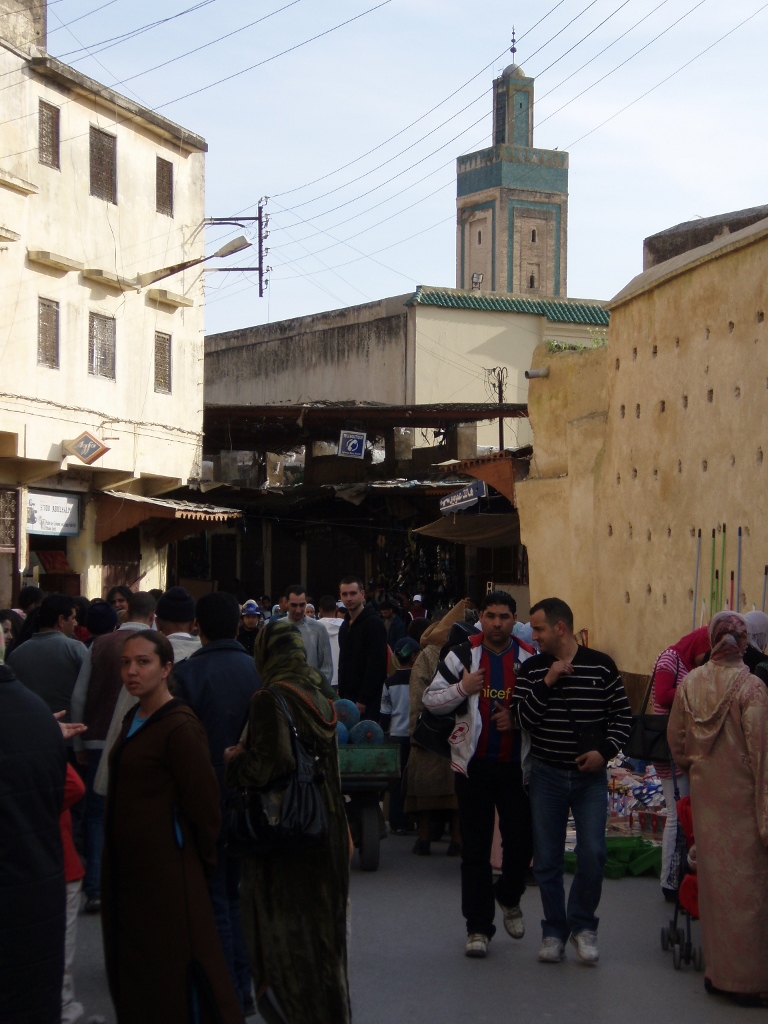 Fes, a detail
Fes, a detail
A little further on, I passed by the al-Hamra Mosque. The exact date of its construction is unknown, but it is believed to have been built in the 14th century. From the main street, called "Grande Rue" or "Great Street," I had a clear view of its minaret.
 Fes, a detail
Fes, a detail
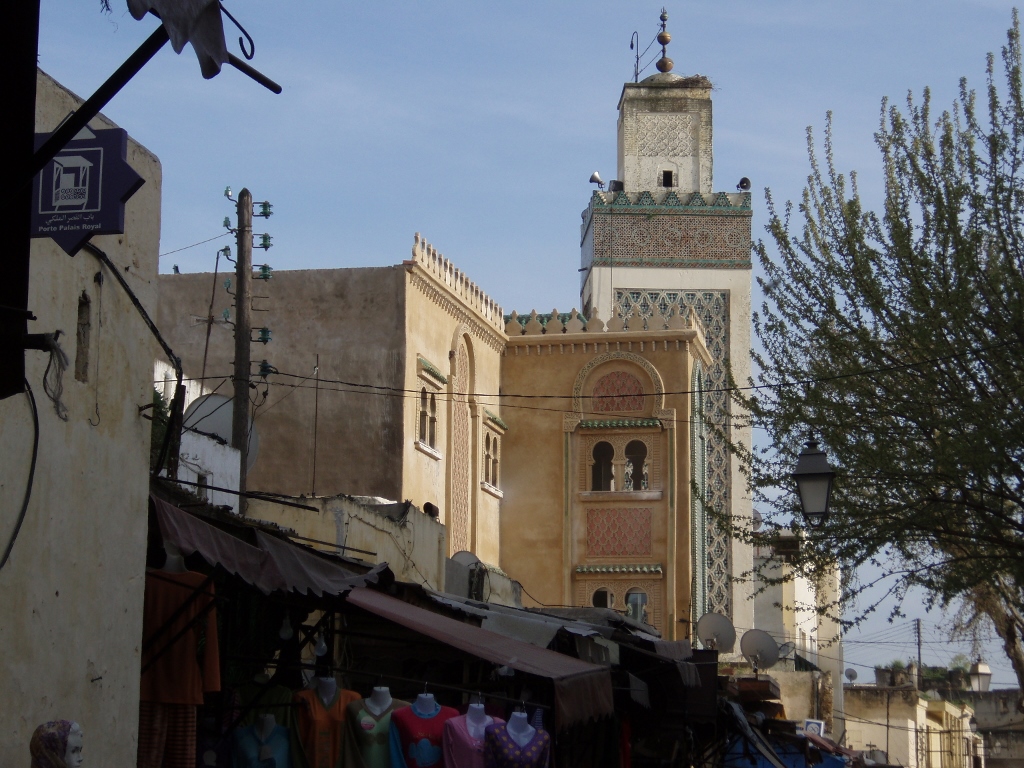 Fes, a detail
Fes, a detail
I had to push through the crowd a bit, but that’s how I reached the part of Fes Jdid called Mellah and this was once the Jewish quarter.
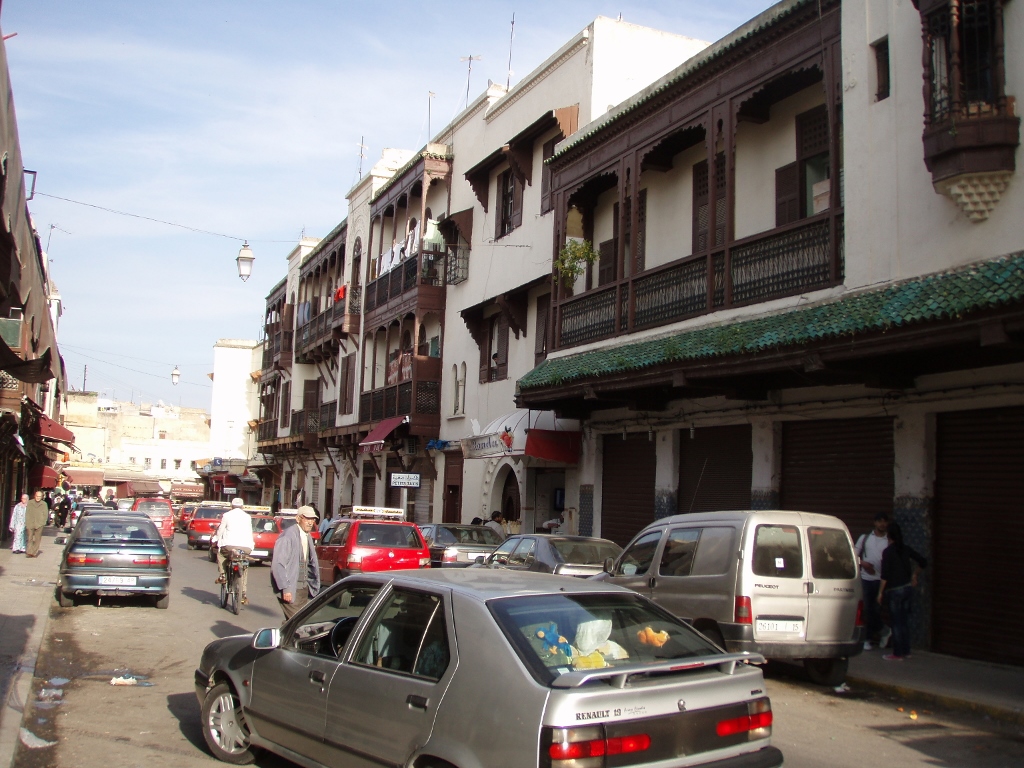 Fes, a detail
Fes, a detail
The fact that this was the Jewish quarter can easily be concluded from the windows and balconies that face the street.
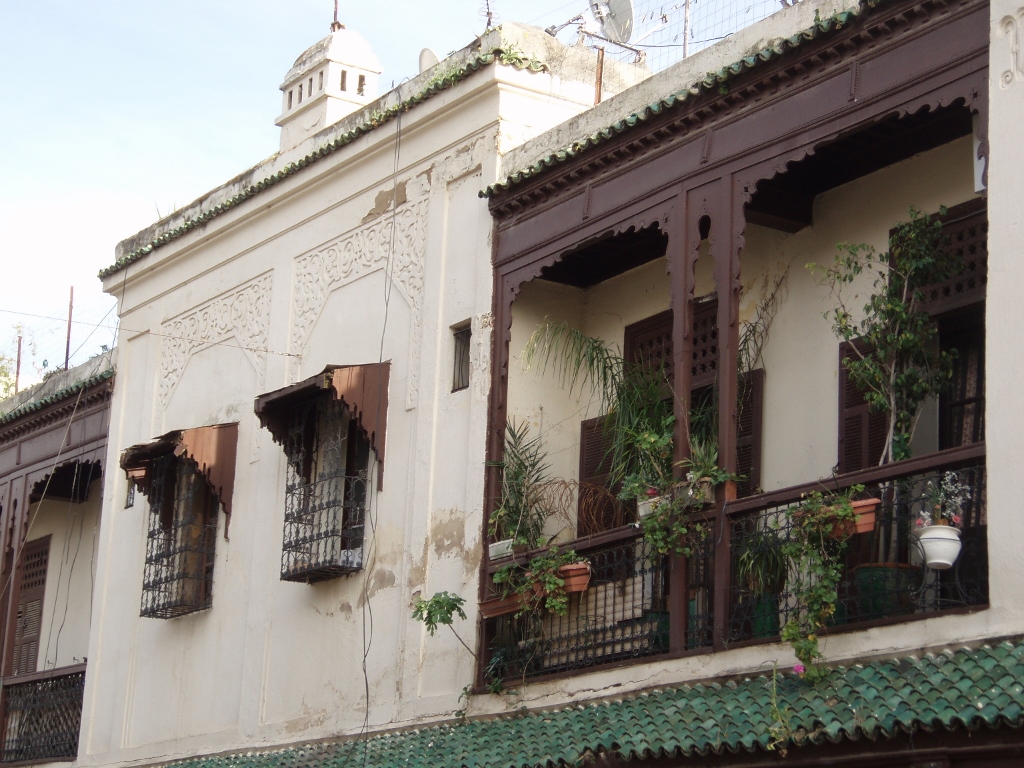 Fes, a detail
Fes, a detail
Continuing my walk, I eventually reached a spacious square from which one enters the Royal Palace.
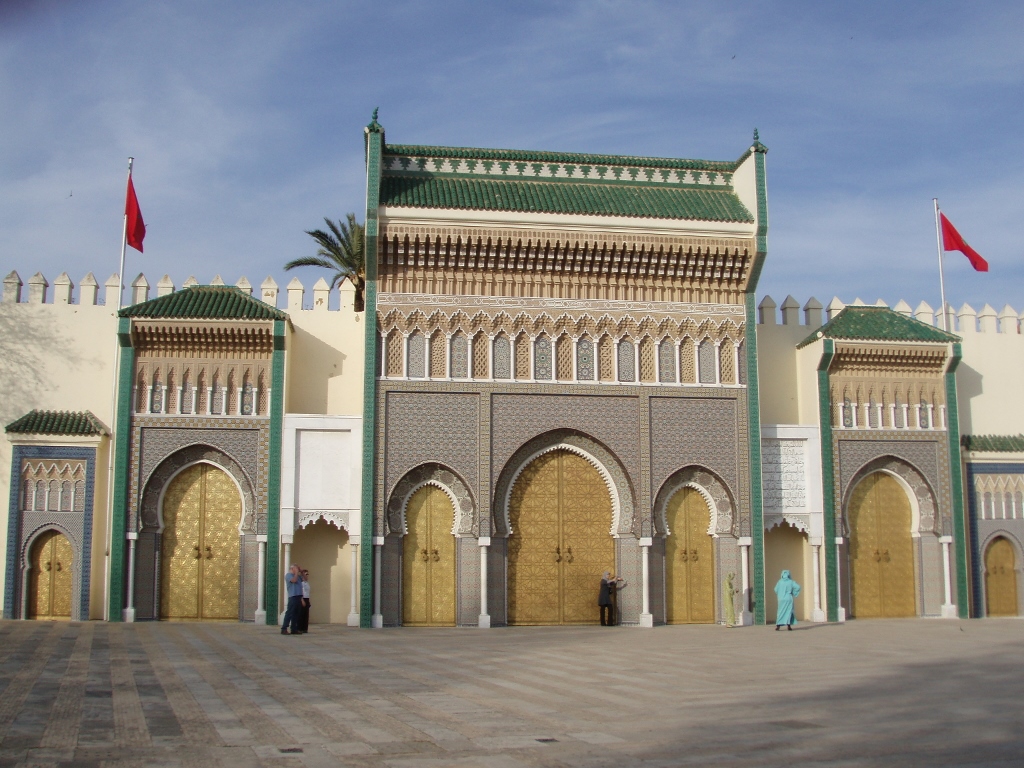 Fes, a detail
Fes, a detail
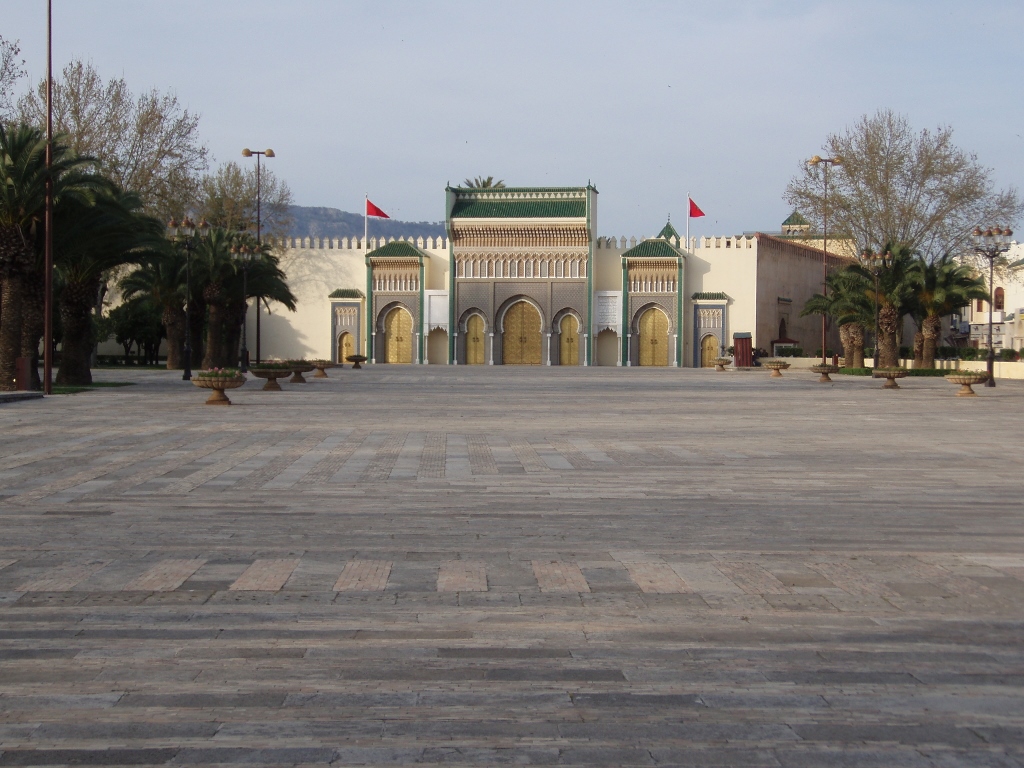 Fes, a detail
Fes, a detail
Here, I ran again into a German man I had met at the Nejjarine Museum of Wooden Arts & Crafts that I mentioned in the previous part of the travelogue. We started talking about travel and various other things, and more than an hour passed, though we were also walking during that time.
It wasn’t much of a problem for me, because from this spacious square in front of the Royal Palace, a street leads directly to the New City or Ville Nouvelle.
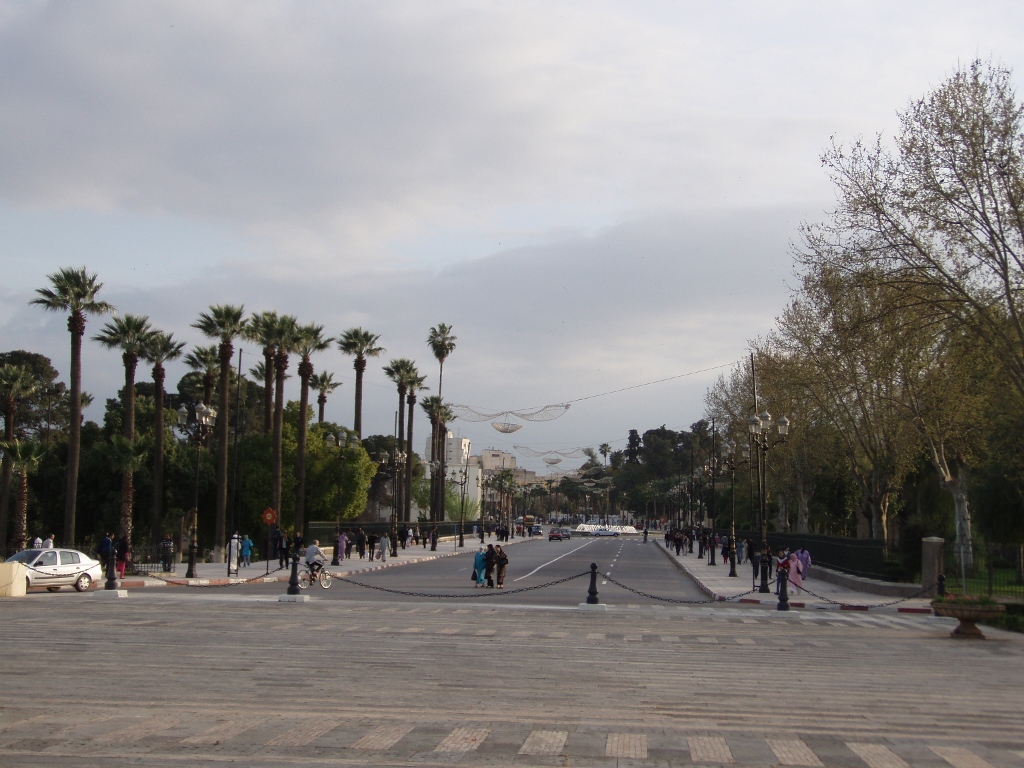 Fes, a detail
Fes, a detail
I had practically finished exploring the Medina in Fes here, but before I headed down the wide avenue, I also recorded the Bab Al Amer gate.
 Fes, a detail
Fes, a detail
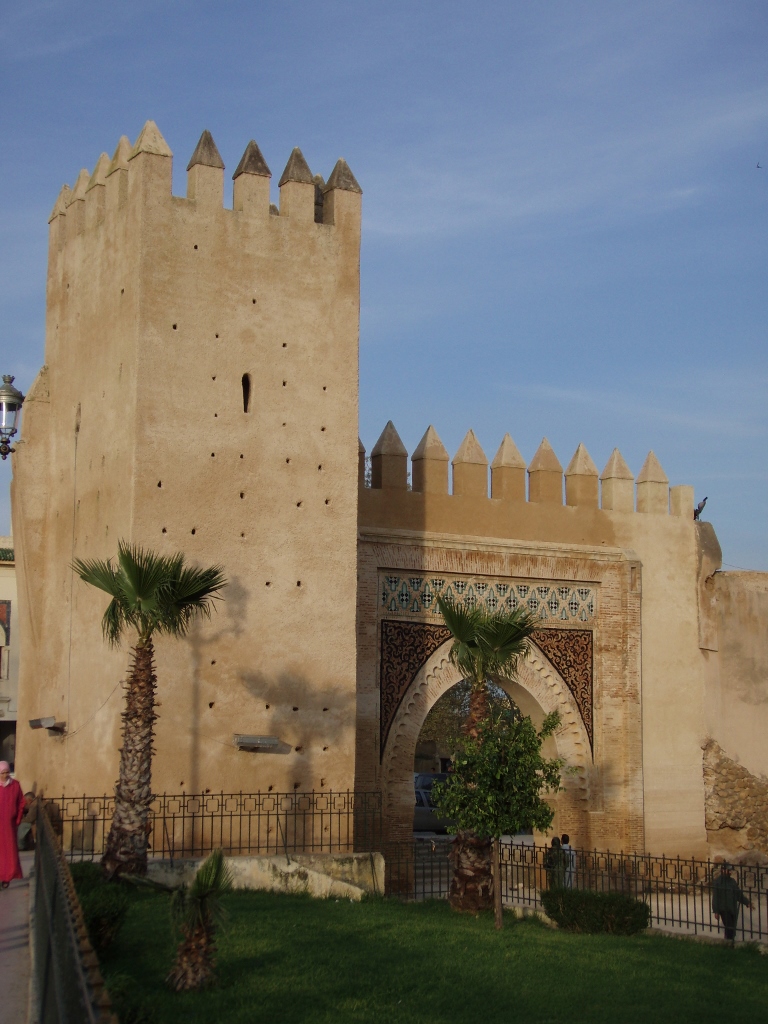 Fes, a detail
Fes, a detail
While talking to that German guy, I made my way to Ville Nouvelle. We parted ways there, as I needed to head to an internet café and then back to my hotel room since I had to wake up very early the next day.
So, by 6 a.m. the next morning, I was already at the coach station in Fes and I immediately settled into the coach that was supposed to take me to Erfoud.
The coach seemed quite old and the journey was supposed to last about 11-12 hours (the distance is around 420 km), but what could I do? I told myself that this was the way the road takes me (through life and on this journey). Besides, I comforted myself by the fact that I found an empty seat in the first row behind the driver, next to the aisle. I figured this would give me a relatively nice view of the landscape and I would also be able to stretch my legs.
However, the coach was supposed to leave at 6:30, but then some official people got on the coach and told me to move to another one, which was leaving at 7:00 and going to Errachidia. Apparently, the ticket was valid, everything was arranged, and so on.
So, I switched to that other coach and it wasn’t bad. In fact, the coach itself was slightly better than the one I had originally planned to take. At some point, an official-looking guy walked through the coach, collected our tickets to Erfoud and handed out tickets to Errachidia. I could tell that from the price, which was lower, while of course there was no change, but they still tried to convince me that everything was fine. Of course, everything wasn’t fine in the end, but I’ll talk about that later.
For now, I’ll just say that we left on time and along the way, I tried to take a nap, but I couldn’t manage it.
At some point during the morning, we made a stop in a small village. I think by that time we were already in the Middle Atlas region, but honestly, I had no idea where I was.
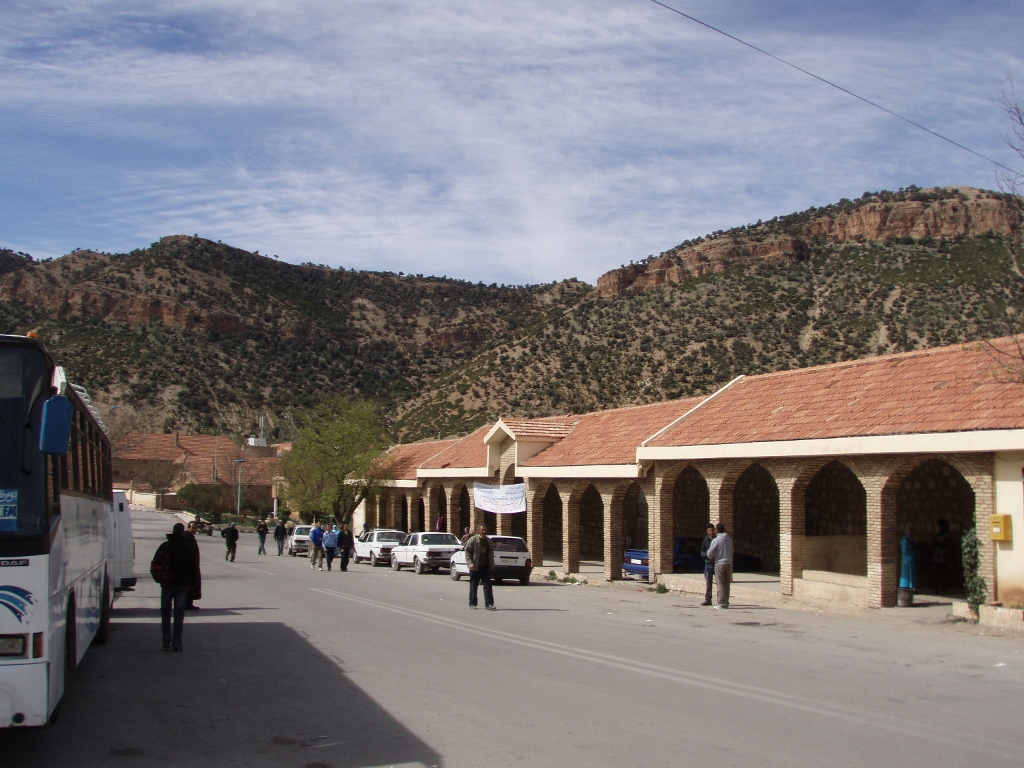 On the way from Fes to Erfoud
On the way from Fes to Erfoud
 On the way from Fes to Erfoud
On the way from Fes to Erfoud
After the break, we continued on and I occasionally took photos from the coach of the landscapes we were passing through. Since the coach was driving quite slowly, it wasn’t a problem at all for me to take pictures while we were on the move.
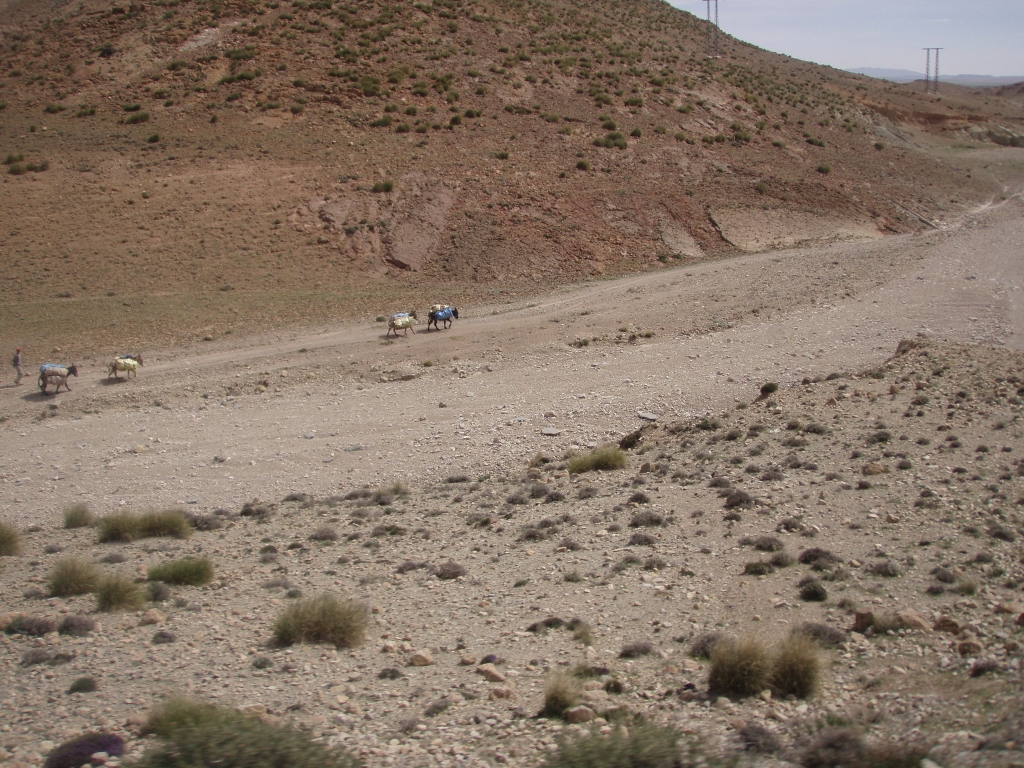 On the way from Fes to Erfoud
On the way from Fes to Erfoud
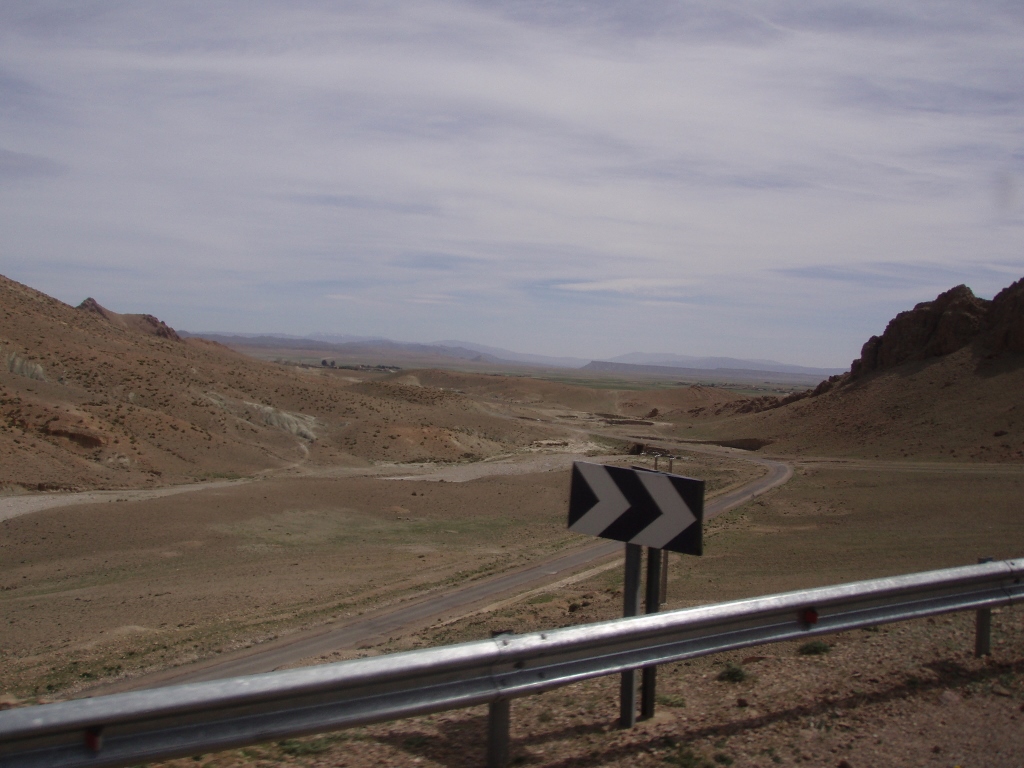 On the way from Fes to Erfoud
On the way from Fes to Erfoud
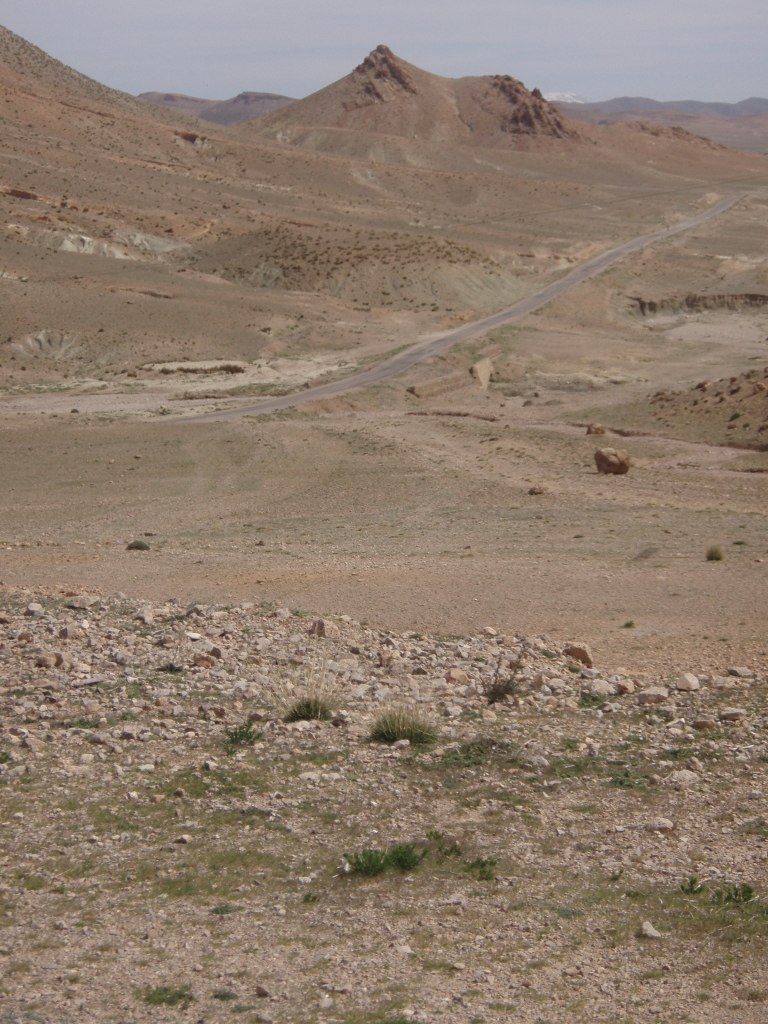 On the way from Fes to Erfoud
On the way from Fes to Erfoud
The journey was truly long, but I really got to see a lot of interesting details along the way. Sometimes it was snow-covered mountain peaks that were faintly visible in the distance, or sheep, and at other times, traditional houses in the countryside, or more modern houses in smaller towns the road passed through.
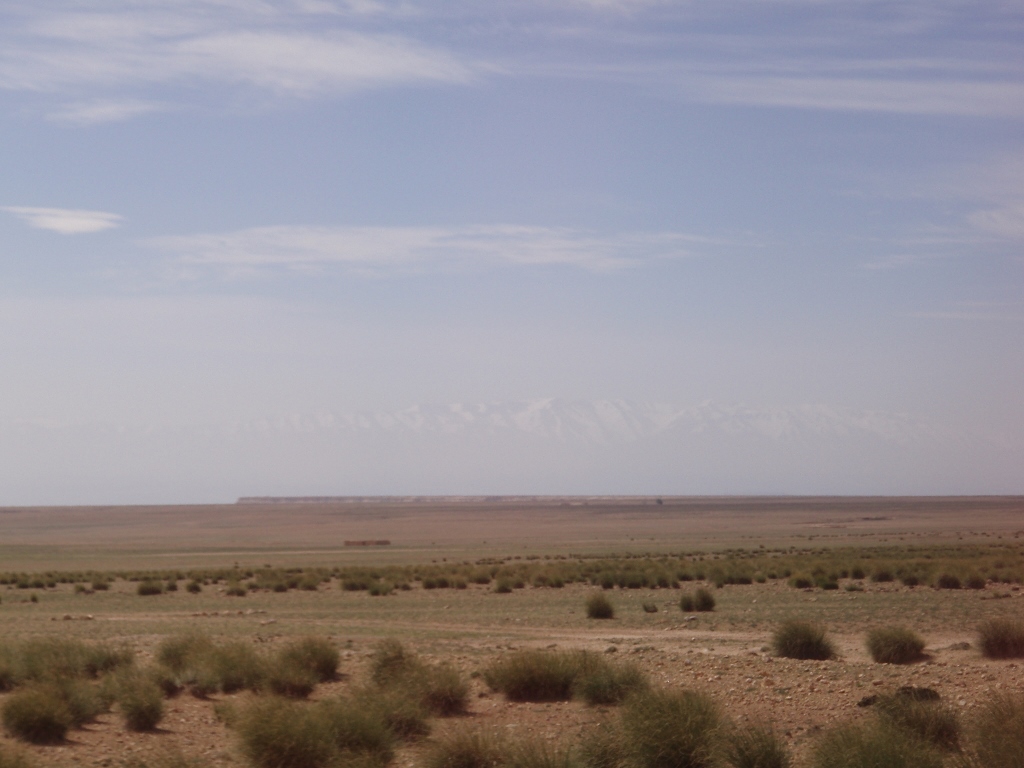 On the way from Fes to Erfoud
On the way from Fes to Erfoud
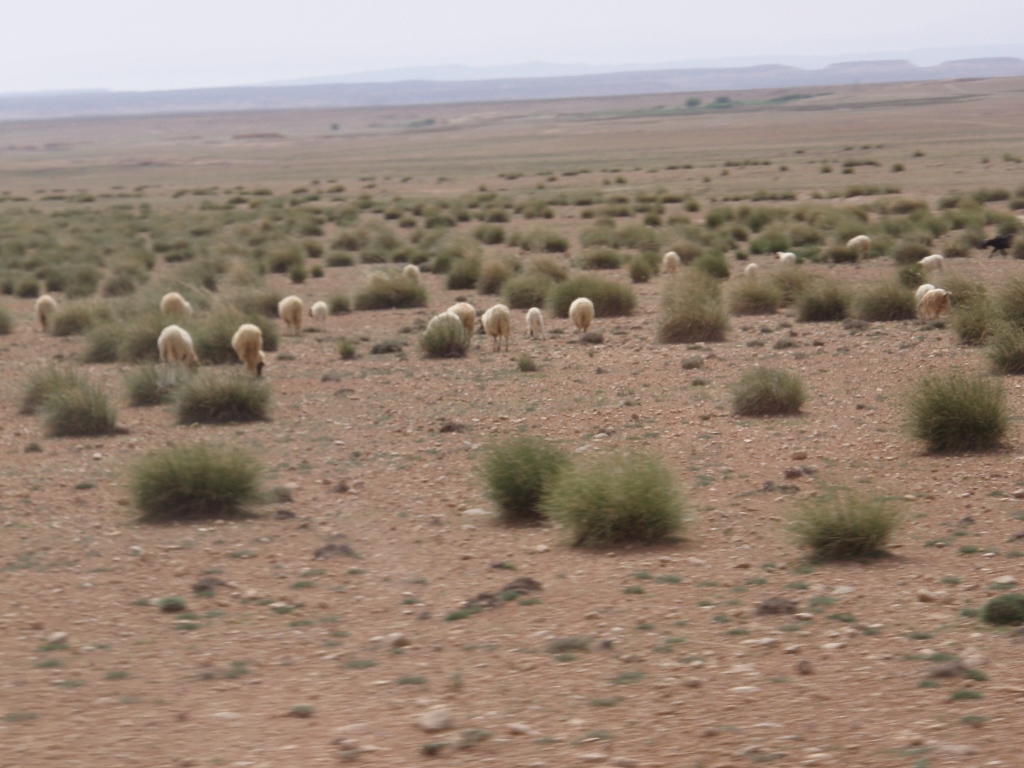 On the way from Fes to Erfoud
On the way from Fes to Erfoud
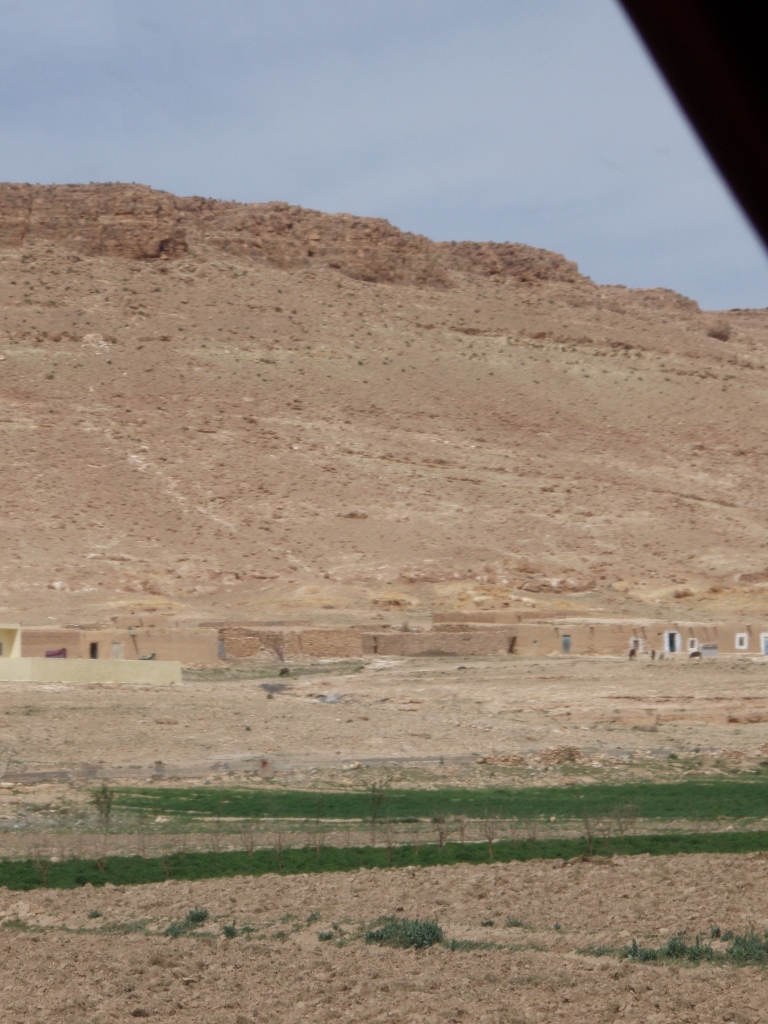 On the way from Fes to Erfoud
On the way from Fes to Erfoud
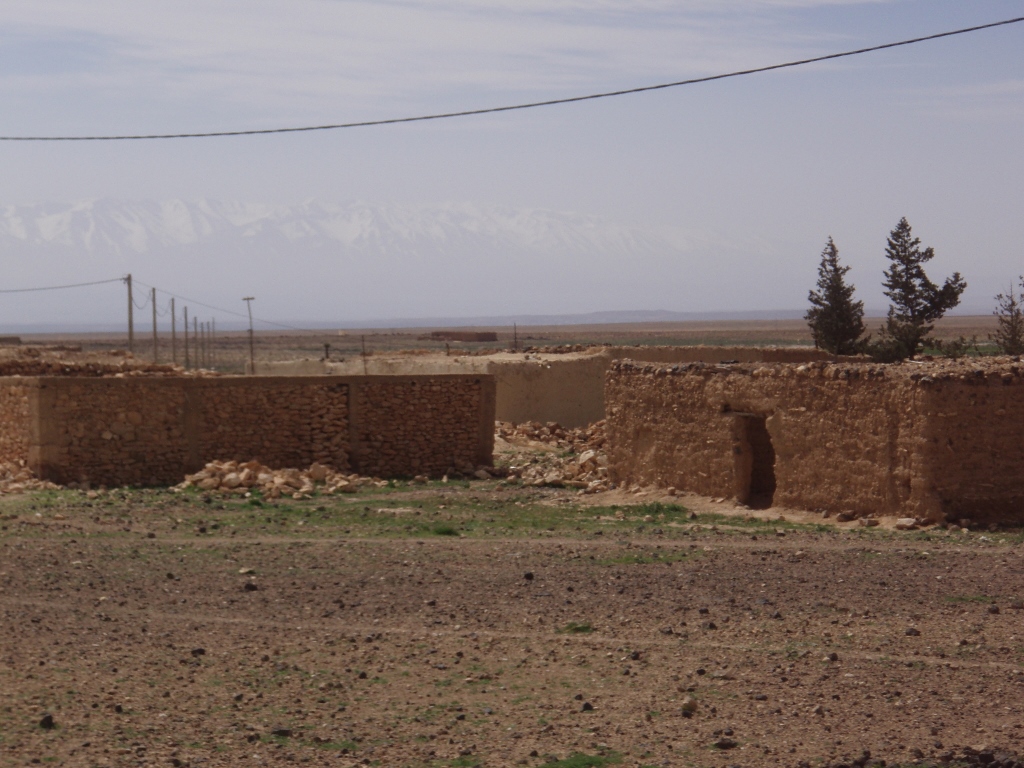 On the way from Fes to Erfoud
On the way from Fes to Erfoud
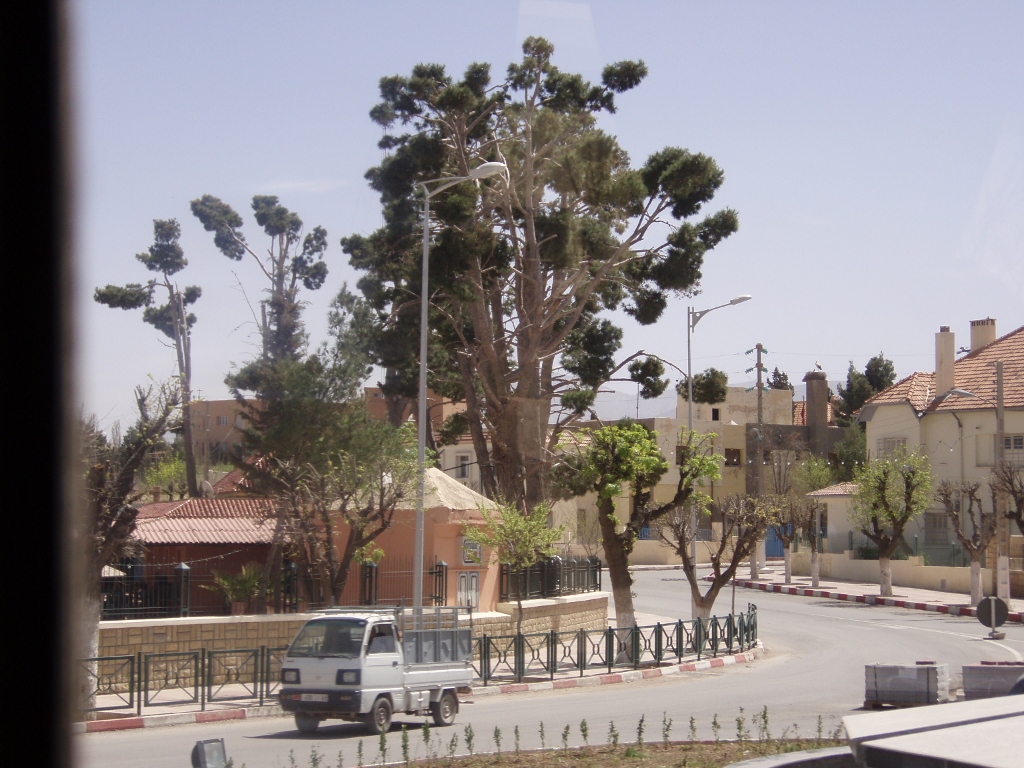 On the way from Fes to Erfoud
On the way from Fes to Erfoud
The landscapes mostly appeared dry, but there was occasional vegetation, and the flat areas alternated with mountainous heights.
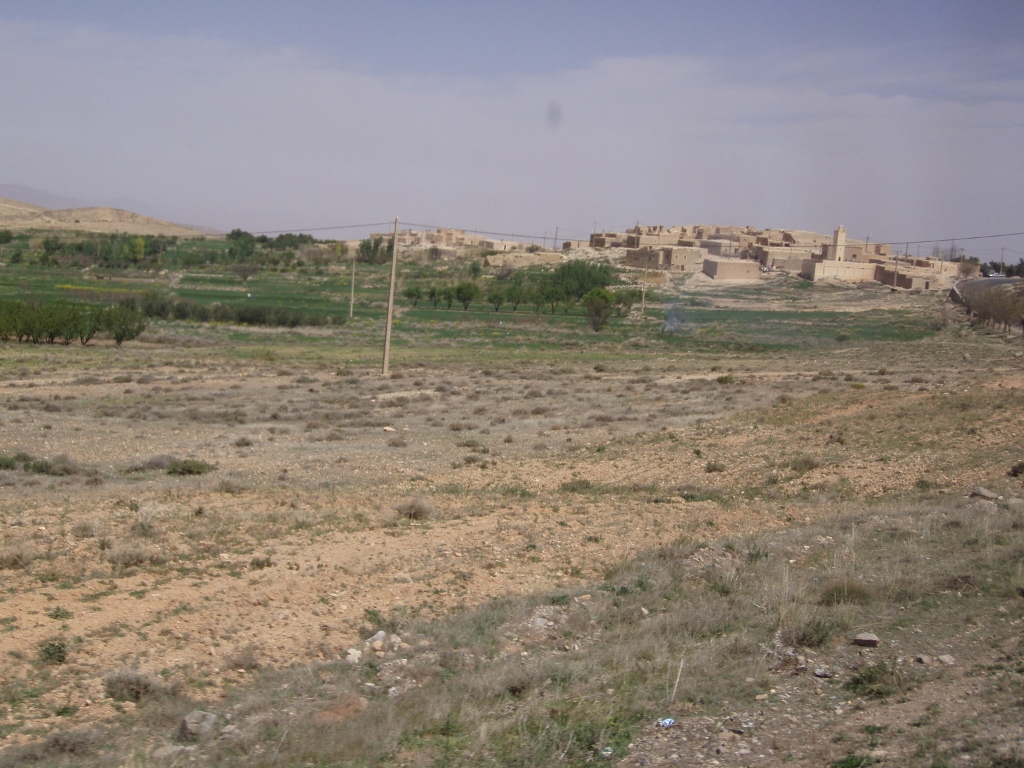 On the way from Fes to Erfoud
On the way from Fes to Erfoud
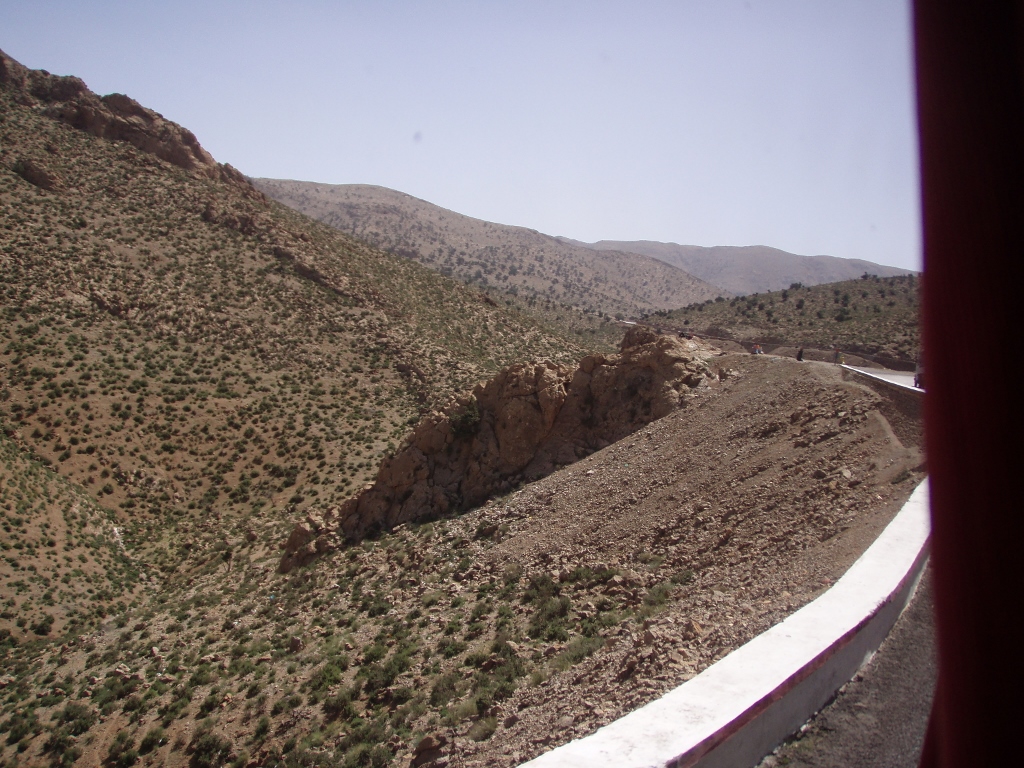 On the way from Fes to Erfoud
On the way from Fes to Erfoud
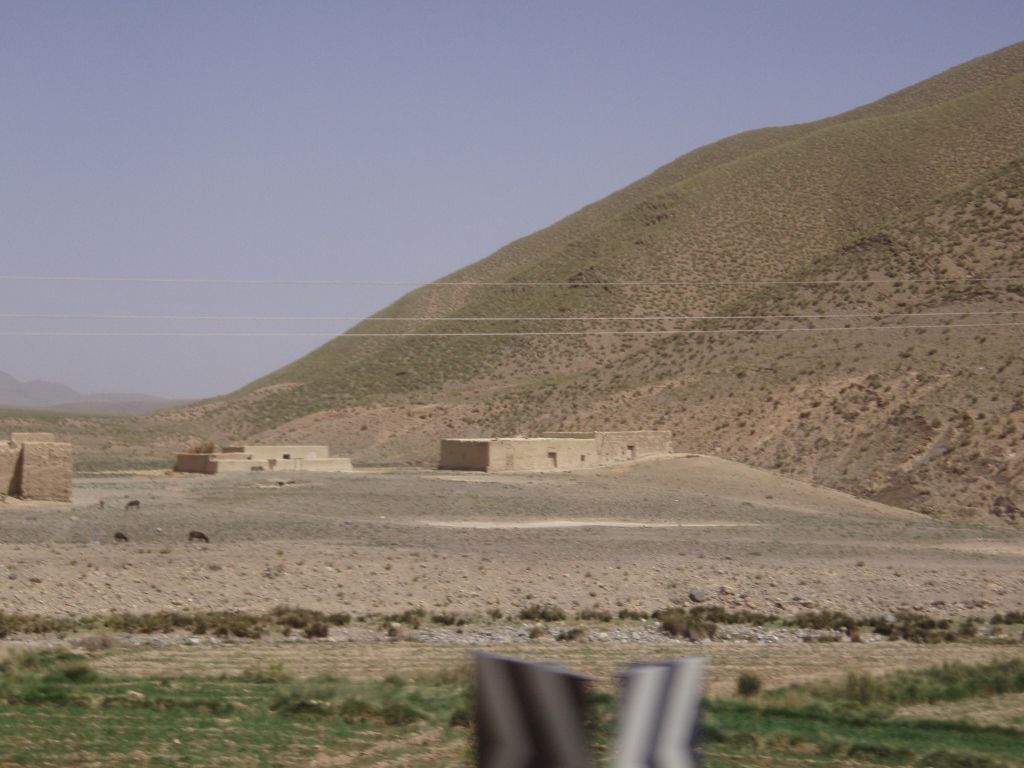 On the way from Fes to Erfoud
On the way from Fes to Erfoud
In the meantime, I also started "spending time" with a very sweet little girl who was sitting across the aisle, in her mother's lap. At some point, she came over to my lap, I sang to her a Serbian nursery rhyme and she just relaxed and fell asleep in my arms. And she slept like that for two hours!!! My arms went numb, but it felt nice. After a while, she woke up and went back to her mom. A mother’s hug is still the best and warmest, but before she went back to her mom, she kissed me on the cheek.
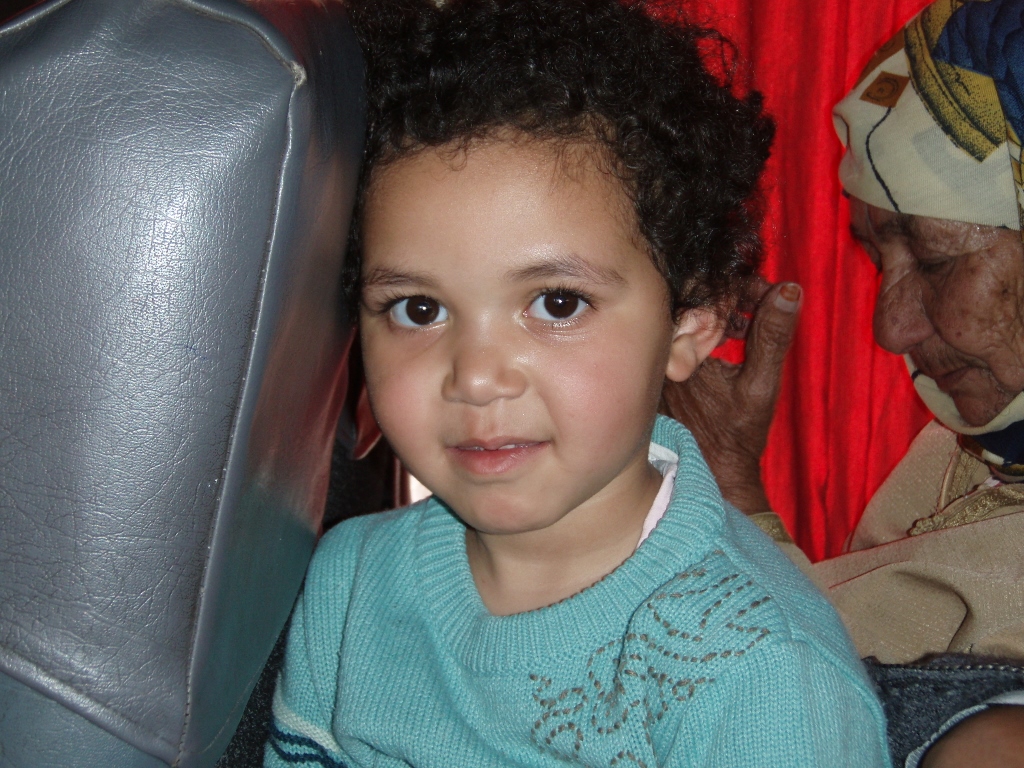 My “friend” from the trip
My “friend” from the trip
Aside from how incredibly sweet the little girl was, I also found her mother interesting. She was wearing a kind of chador that looked to me like a thick blanket draped over her body. Over her face, she wore a niqab, with only a narrow slit for her eyes – but interestingly, even just from that small detail, I could tell she was a beautiful young woman.
Of course, her clothing struck me as unusual. It wasn’t just the fact that she was so fully covered (after all, in a previous photo, you can see an older woman sitting next to her with her entire face visible, which means that only having the eyes exposed is not mandatory), but I also kept thinking that I would probably faint from the heat if I wore something like that over myself.
To be clear, I was wearing long pants, a tank top with wide straps, and a long-sleeved cotton shirt over it. Even though the shirt was unbuttoned, I was still dressed relatively “modestly,” with enough coverage. That was my usual style of dress while travelling through Morocco and I didn’t experience any problems throughout the trip.
On the other hand, that stark difference in clothing made me reflect on some broader themes. People within “Western civilisation,” especially the liberal-Christian segment, are often quick to criticise this way of dressing in traditional Muslim countries, seeing it as a violation of women’s rights and a sign of oppression. Maybe it is, maybe it isn’t. I was reminded again of the story with the receptionist in Meknes, who was clearly subdued and timid in relation to his wife – and I’m sure she dresses traditionally, in the local sense.
The question that remained unanswered for me was: “Are the women who dress like this happy?” I believe many of them are – just as many are not. And by that standard, they are no different from women living within “Western civilisation,” who can dress (or undress) however they want. Western women can have as many boyfriends as they like before marriage (if they even want to get married, but let’s stick to the traditional model for now), and the same goes for men – they too can “try out” different partners before settling down. And yet, if we have so much freedom, if we can dress however we want, if we can experiment with different partners before marriage, and even live with a partner before tying the knot – how is it that there are still so many failed marriages and divorces?
Even though I didn’t arrive at any serious conclusion or answer, I realised that, in the end, not everything comes down to clothing.
Speaking of clothing, I noticed something else interesting and it had to do with the little girl. Since she was sleeping in my lap, I had a good look at what she was wearing: two undershirts, a T-shirt, and a sweater on top; and on the bottom – tights, socks over them, corduroy pants, and boots! During my stay in Morocco, daytime temperatures had already reached around 25°C, and from the photos, you can see I was clearly passing through desert areas. And yet, while this girl slept in my arms, not a single drop of sweat appeared on her face! I think a child in Serbia would probably pass out from heat and sweating under such circumstances.
In any case, when we stopped for a break in one town, I went into a shop and bought a sweet treat for the little girl from the coach. Since I didn’t know the local customs, I handed it to her mother for her to pass on to her daughter.
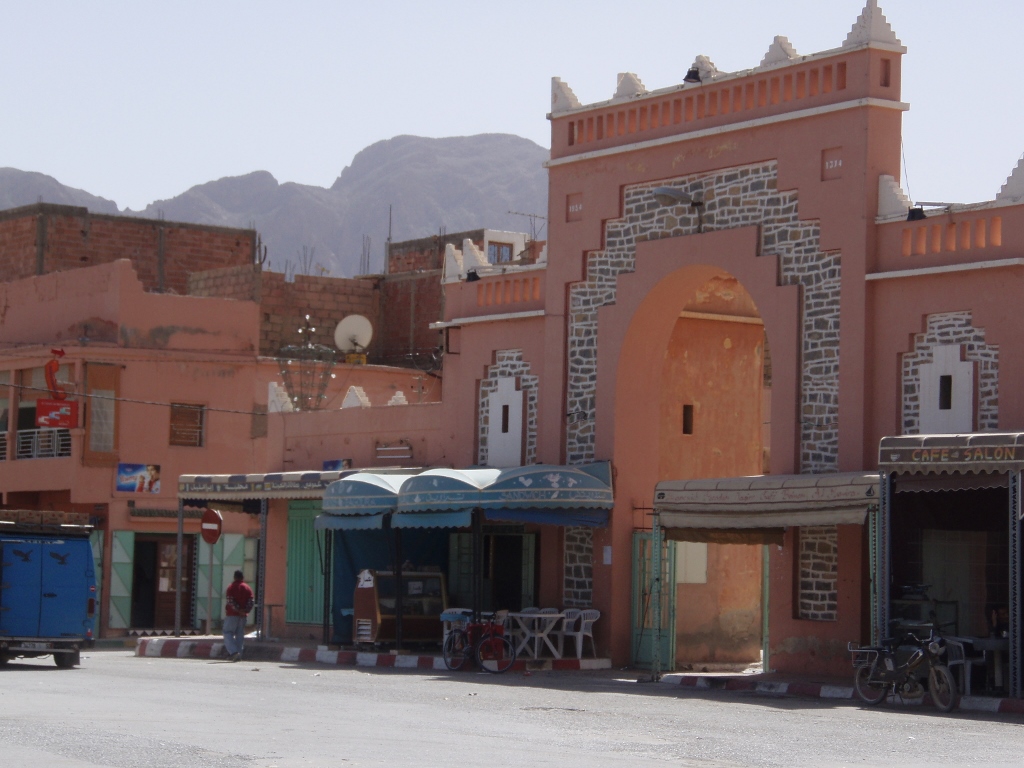 On the way from Fes to Erfoud
On the way from Fes to Erfoud
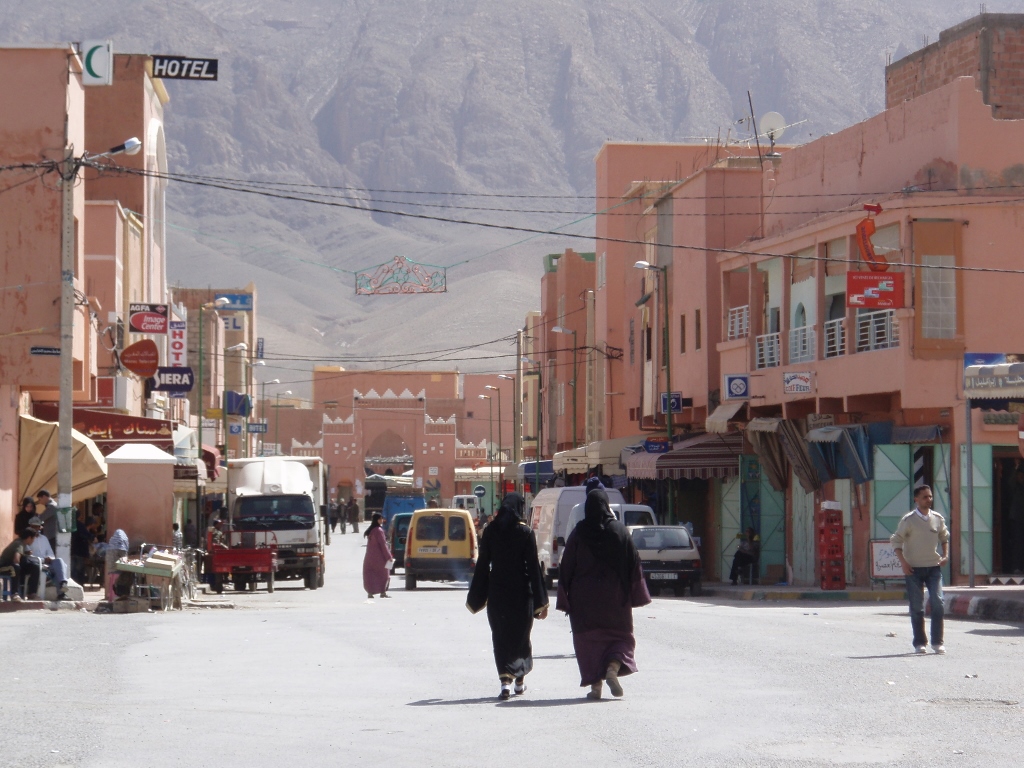 On the way from Fes to Erfoud
On the way from Fes to Erfoud
I also had lunch here and took the opportunity to record various details around the town and later along the roadside.
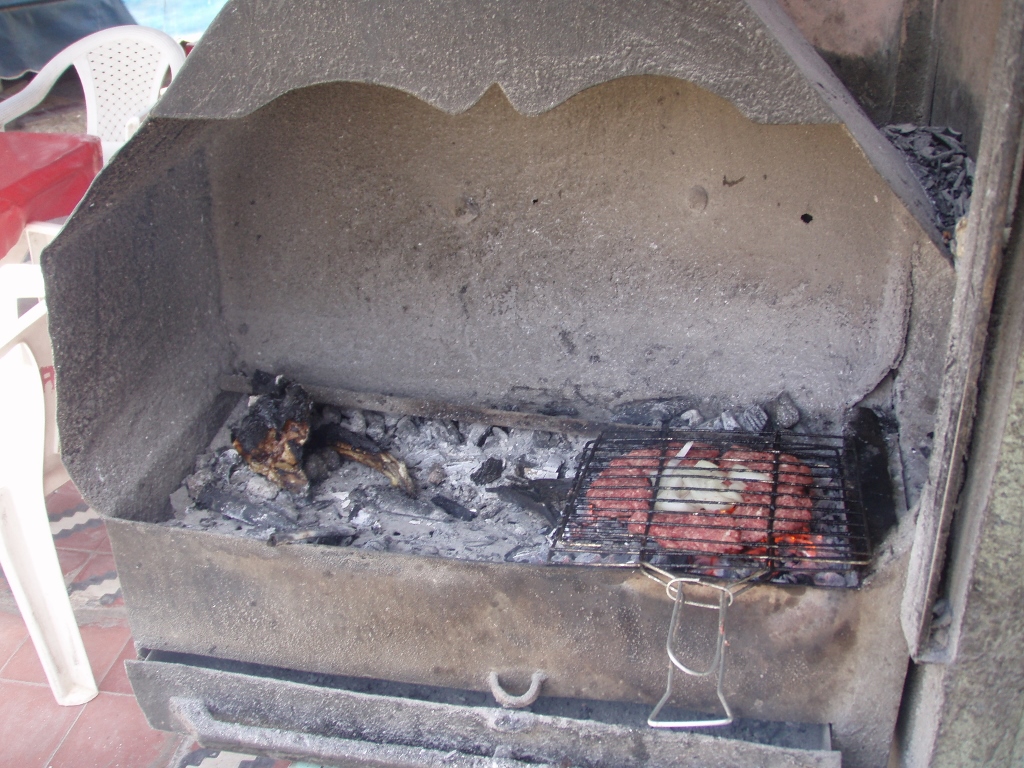 On the way from Fes to Erfoud
On the way from Fes to Erfoud
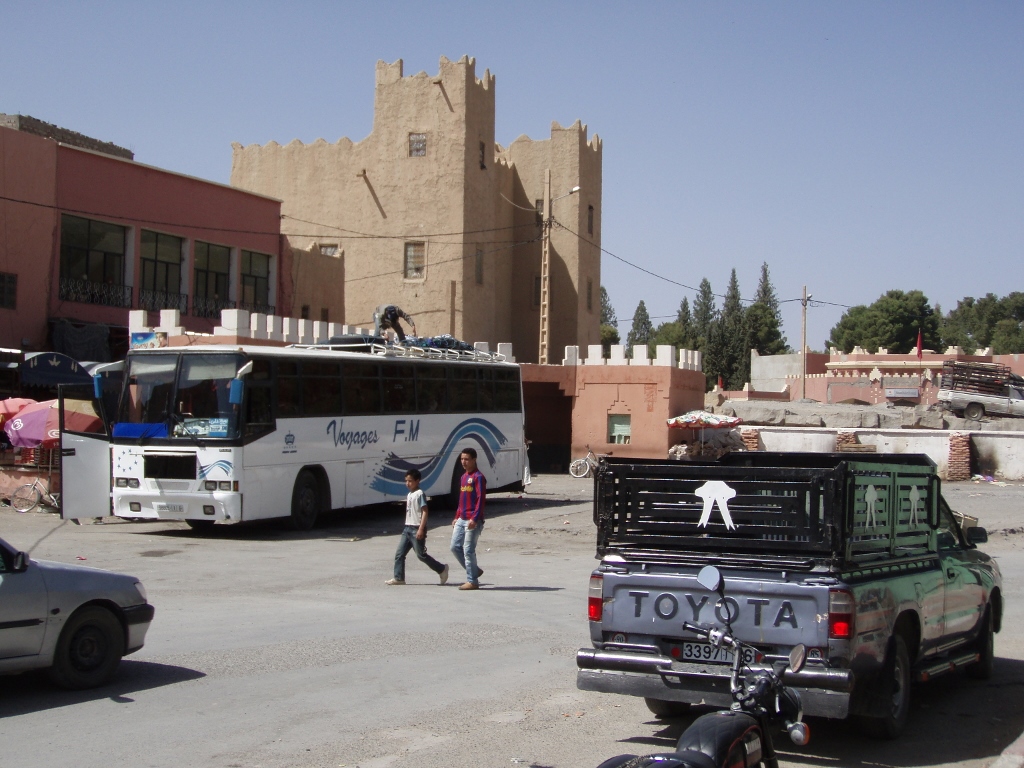 On the way from Fes to Erfoud
On the way from Fes to Erfoud
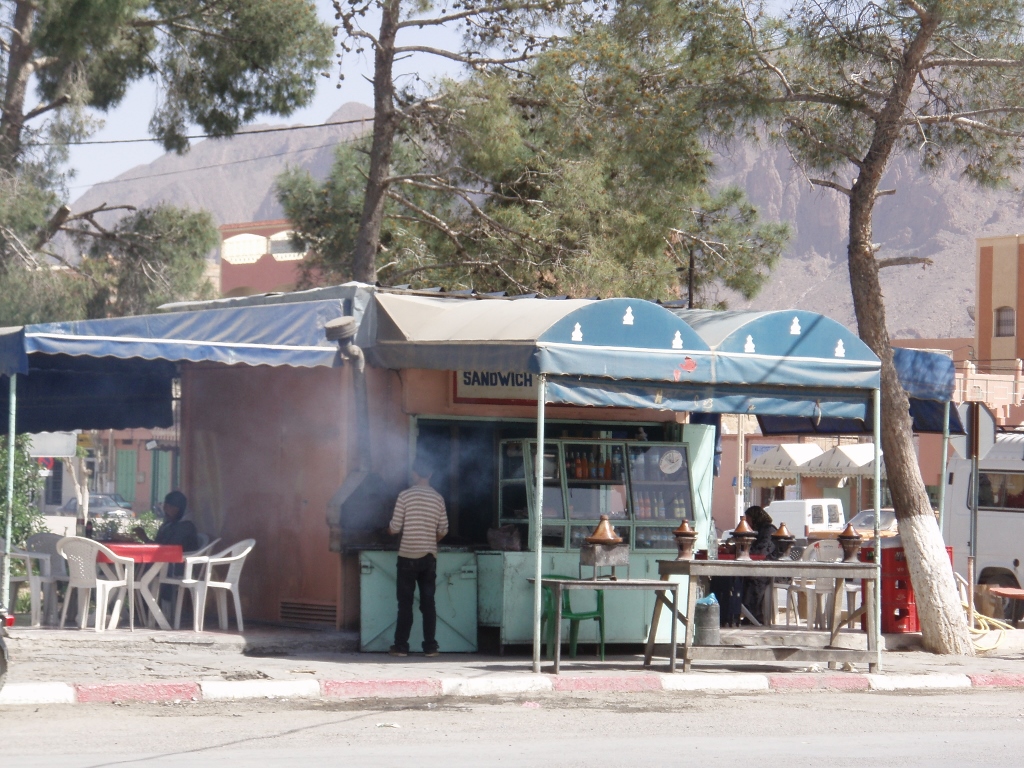 On the way from Fes to Erfoud
On the way from Fes to Erfoud
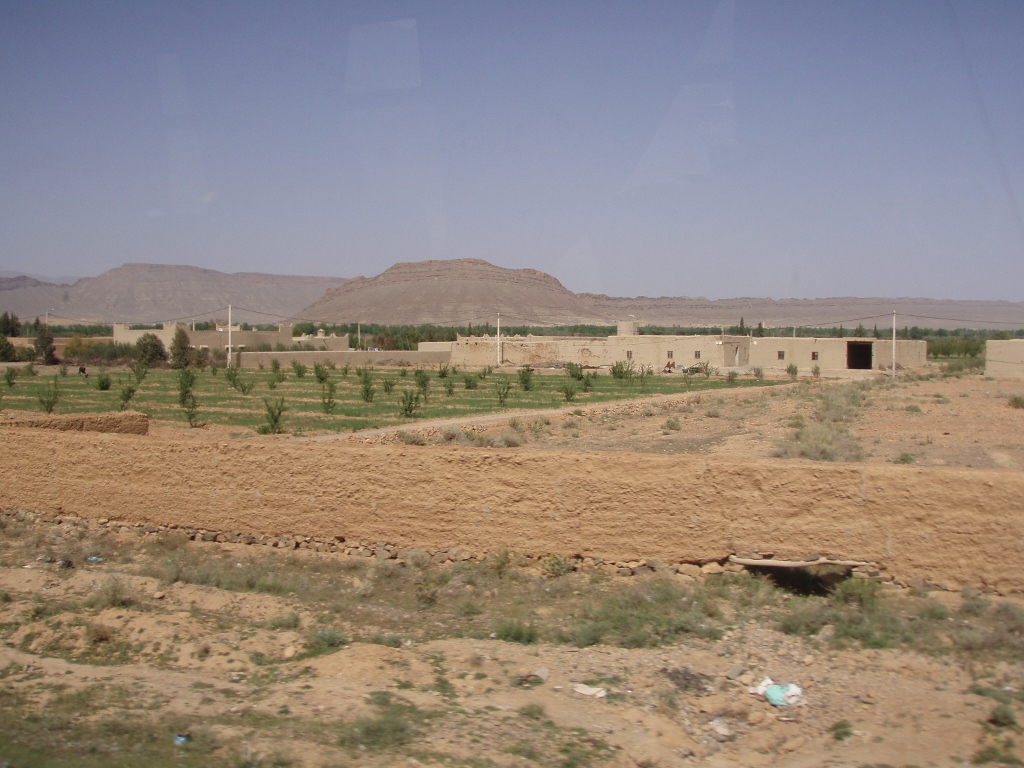 On the way from Fes to Erfoud
On the way from Fes to Erfoud
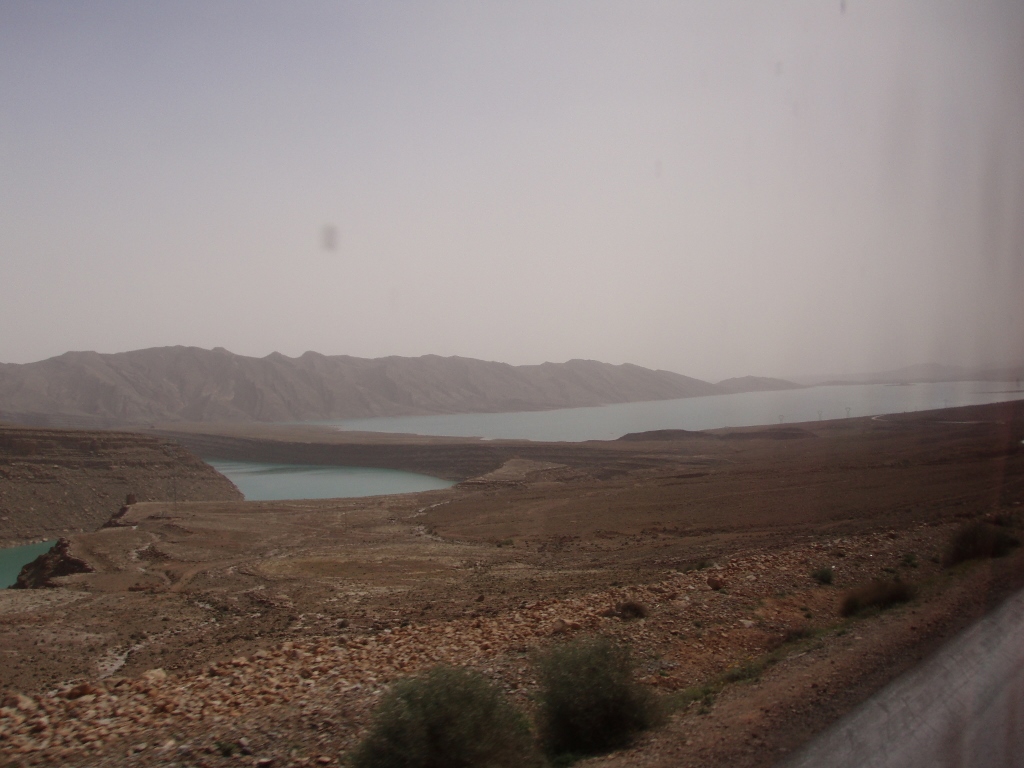 On the way from Fes to Erfoud
On the way from Fes to Erfoud
When we arrived in Errachidia, I was in for a surprise. It wasn’t that the coach drove faster and arrived earlier than expected, which indeed happened, but the problem arose because this was the final stop and the coach wasn’t going any further. This, of course, applied not only to me, but also to the locals. Even though I didn’t speak the language, it was clear to me that one man was having an intense argument with the conductor in Errachidia, but it was to no avail. The coach simply wasn’t going any further and there was no other coach to Erfoud anywhere in sight.
A bit confused, with my backpack, I stood on the plateau where I had exited the coach, thinking about what to do next, far in the east of Morocco.
Here’s a map showing all the places I visited during my stay in Morocco in 2010, including Errachidia.